Nombre:
Palacio de Bruchsal
Otro:
Localización:
Ver mapa más grande
Tipo: Edificios Civiles
Categoría:
Foto:
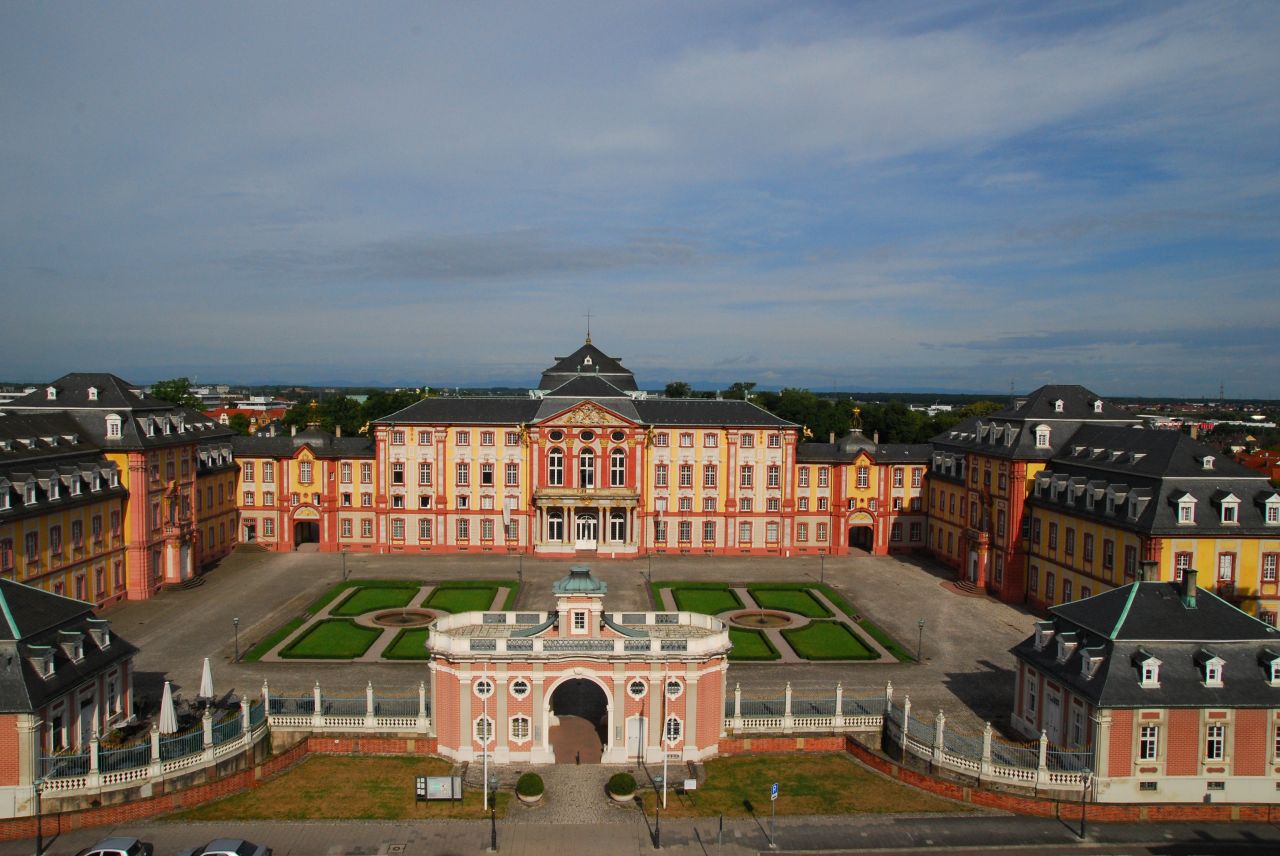
Voto:
Continente: Europa
País: Alemania
Localización: Bruchsal
Año: 1720
Estado: Terminado
Descripción:El palacio de Bruchsal, el único palacio del Barroco residencia del príncipe obispo en el Rin Superior, es famoso por contar con la llamada "joya entre las escaleras barrocas" un diseño original del maestro Balthasar Neumann. Tres plazas de aparcamiento para minusválidos se hallan cerca de la accesible entrada, sin necesidad de salvar escalones, de la que parten amplios pasillos al palacio.
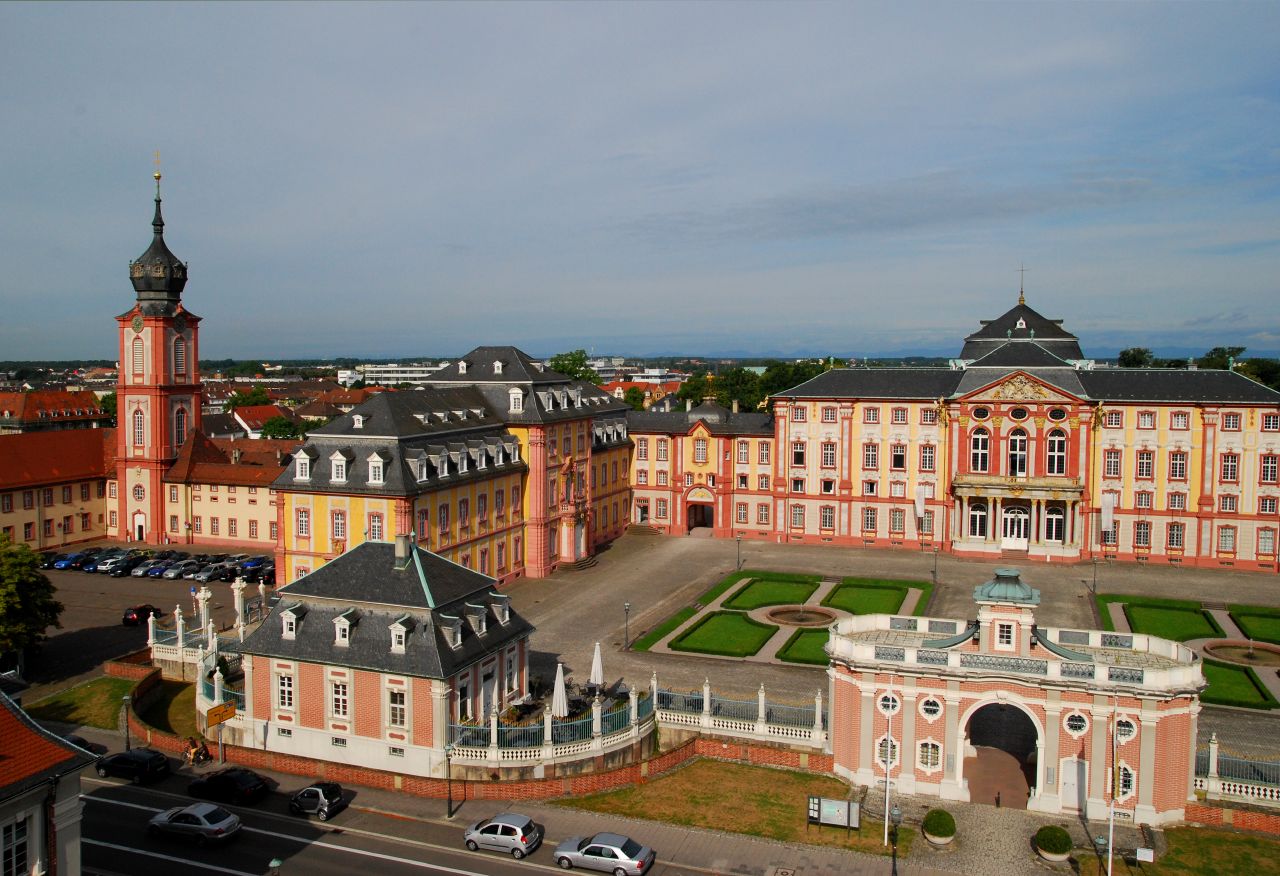
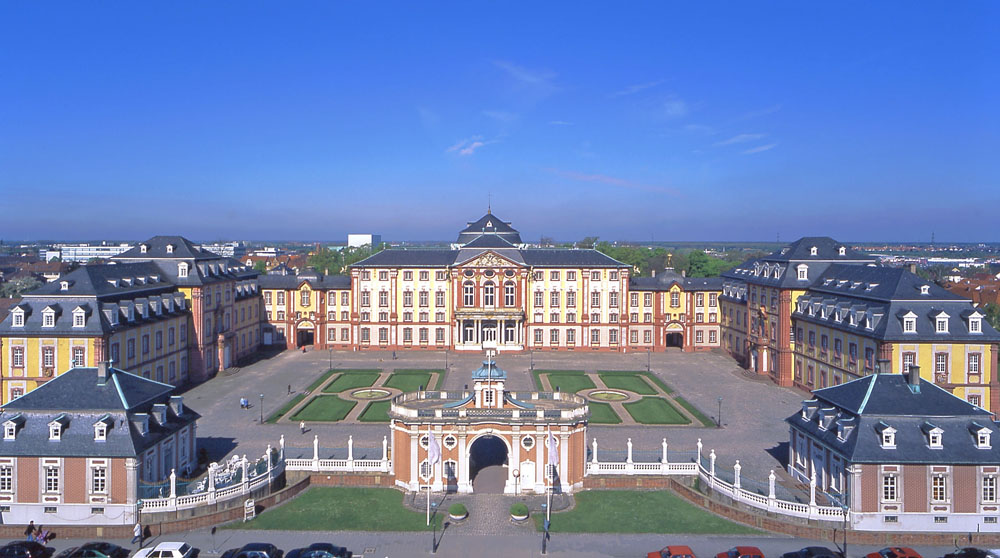
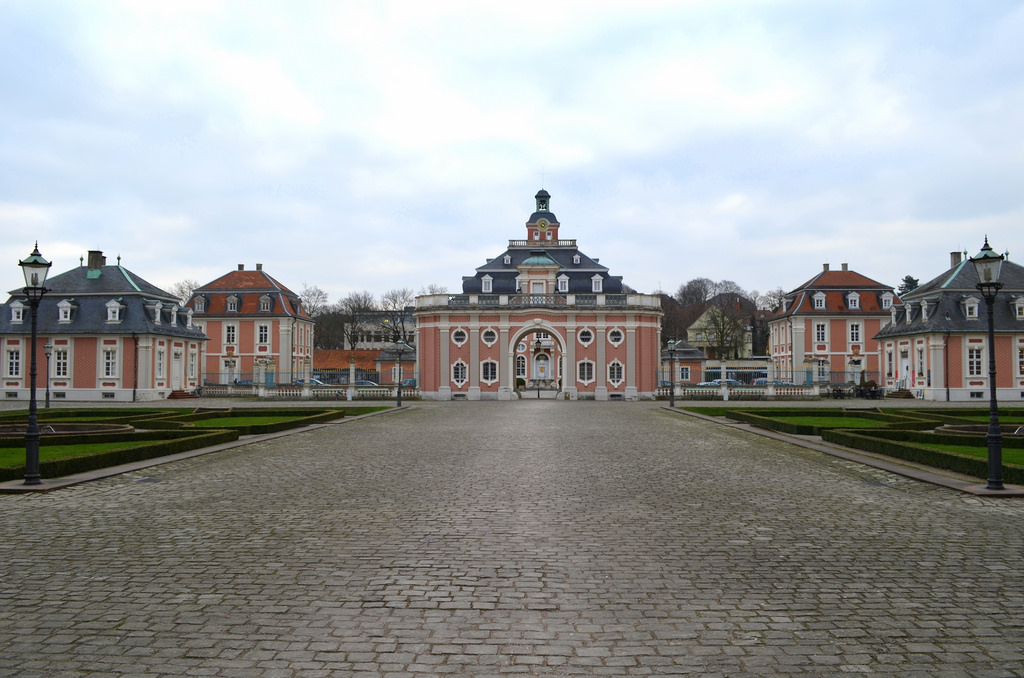
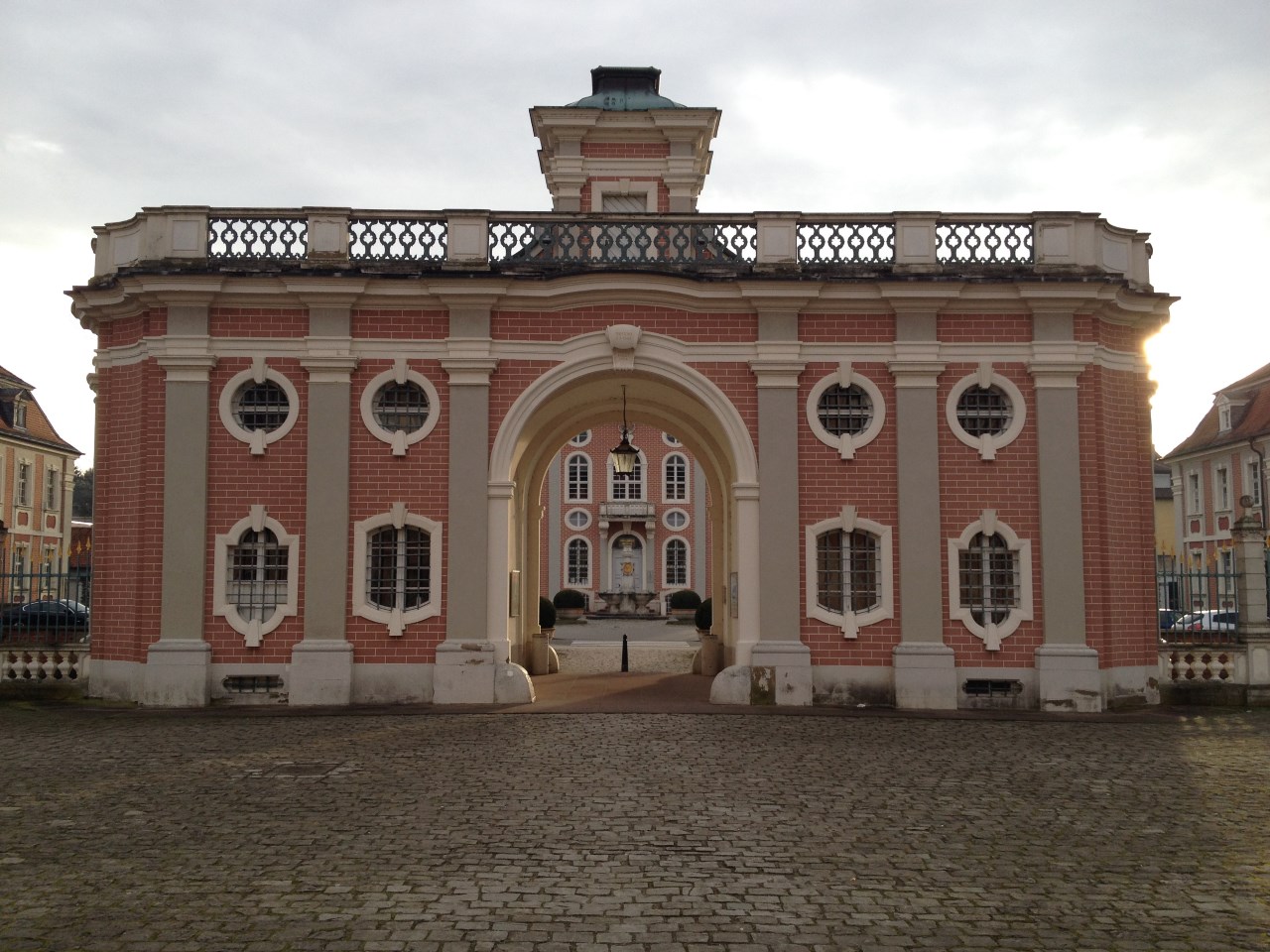

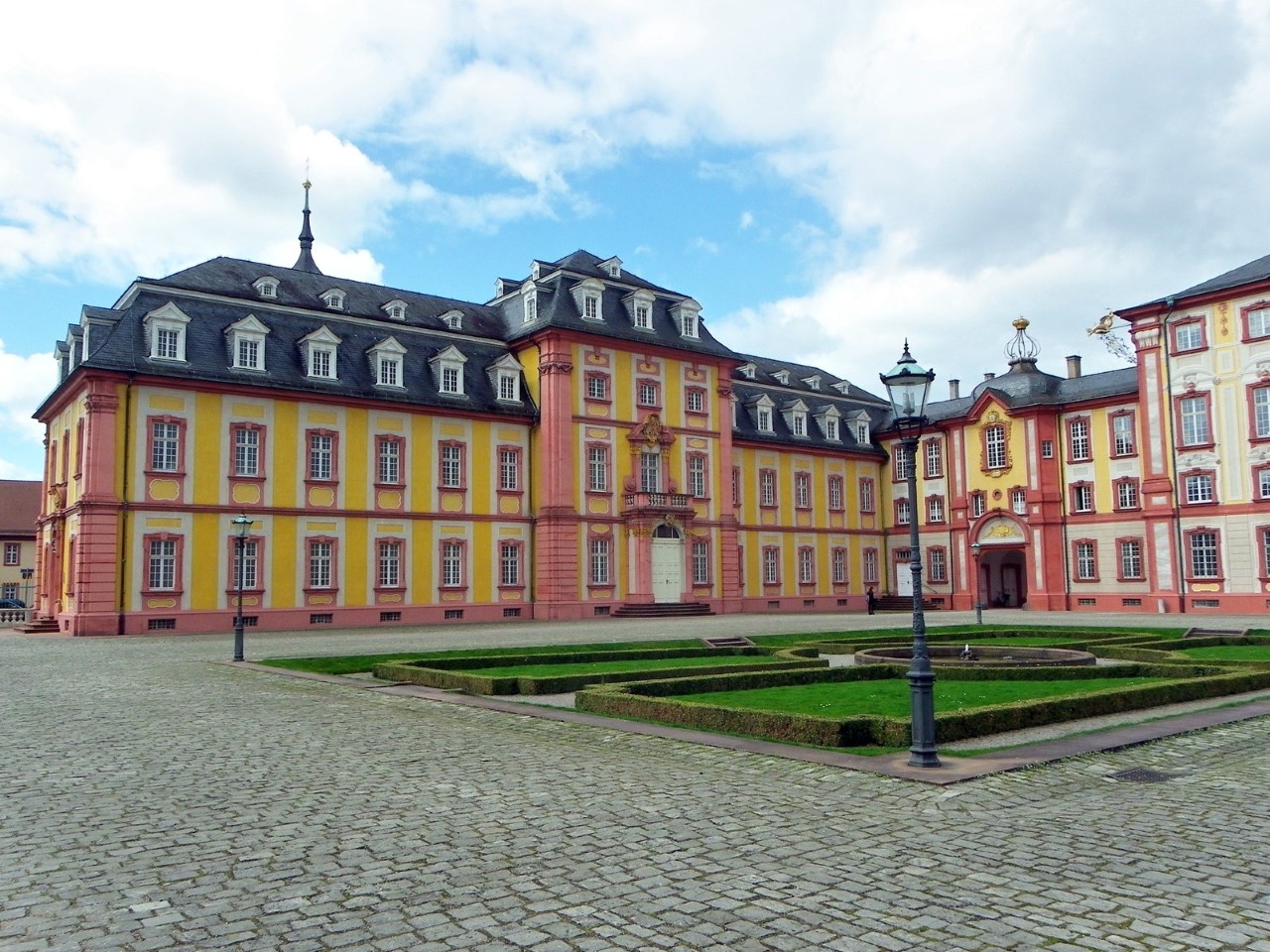
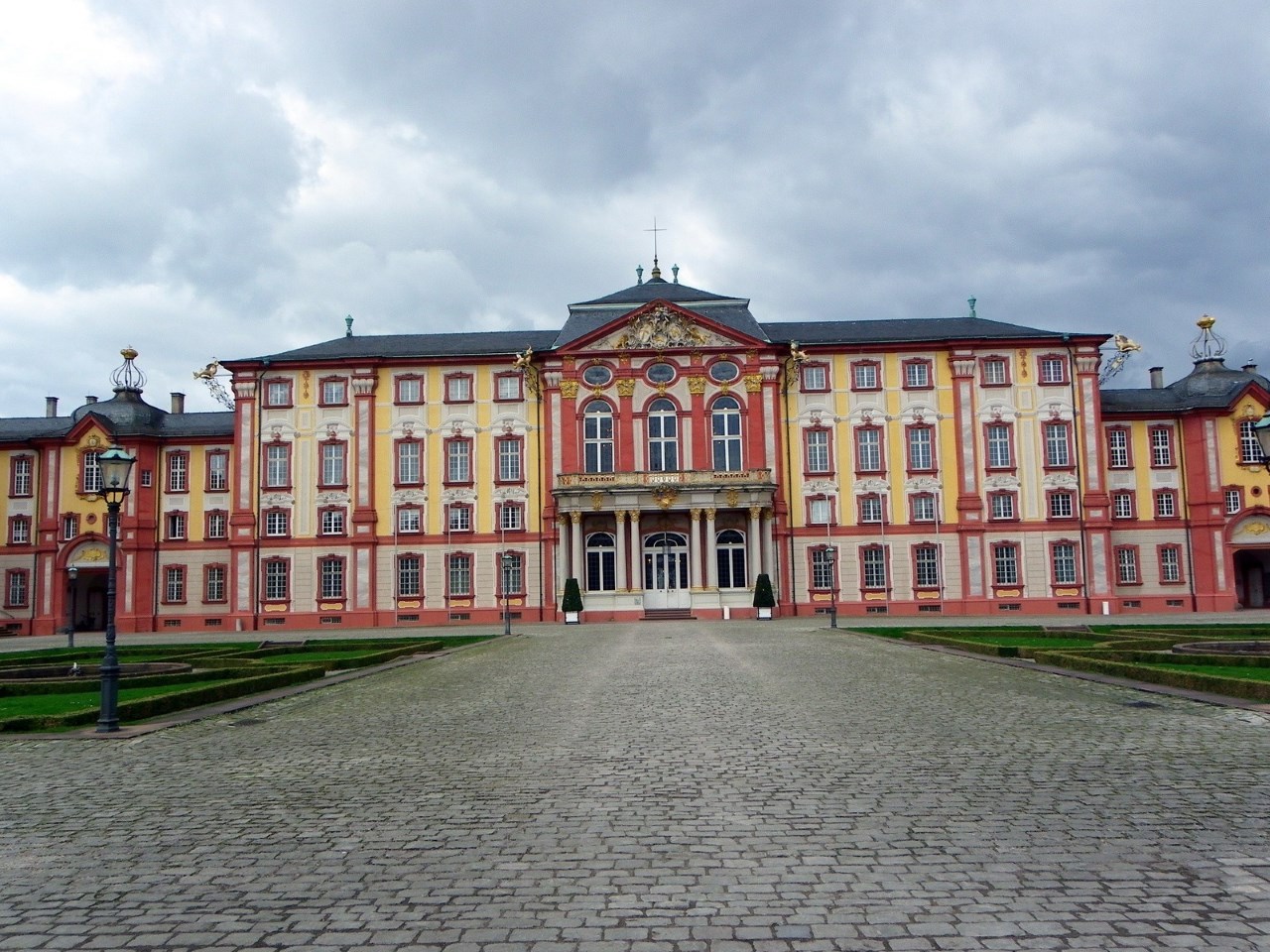
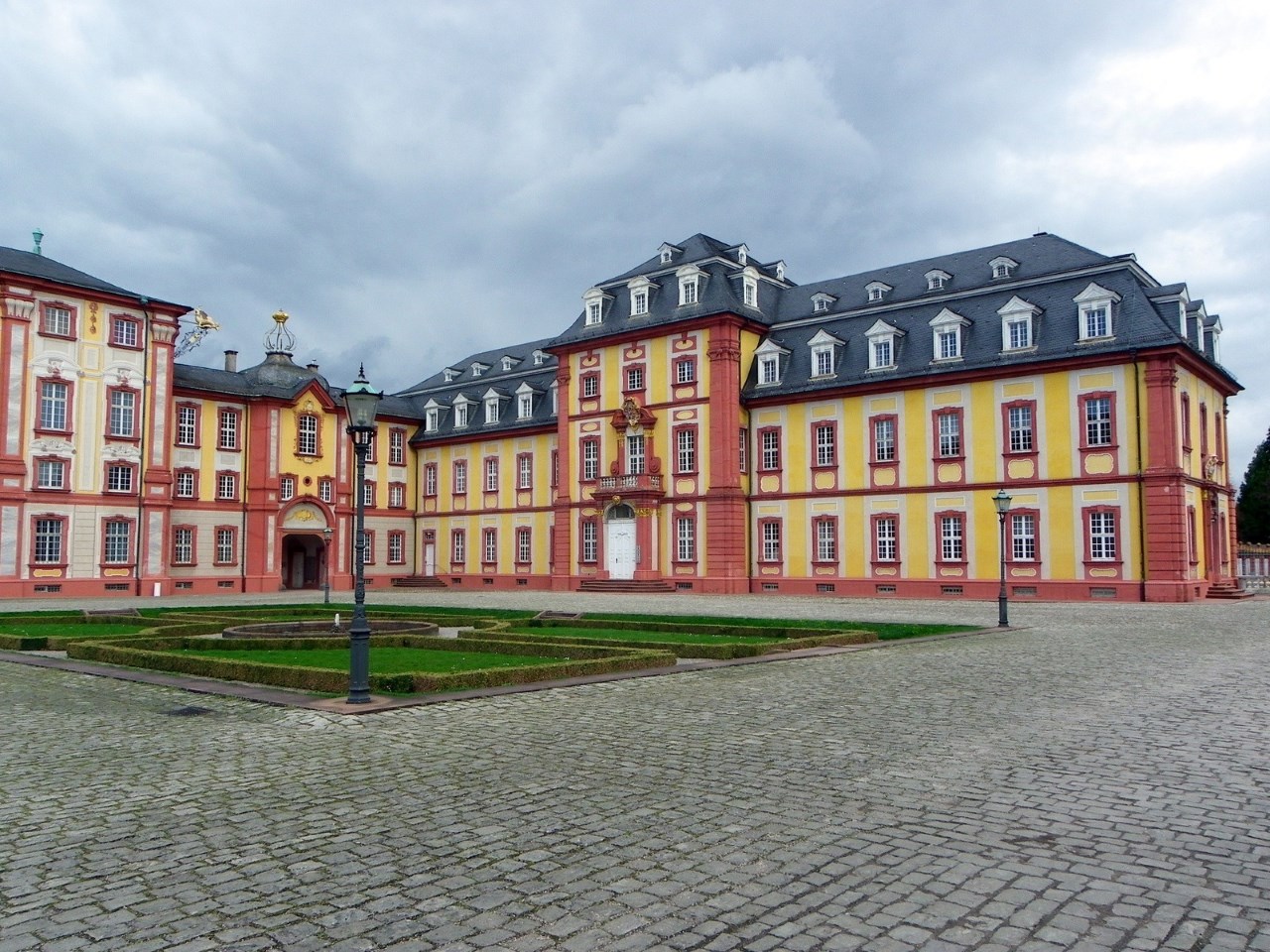
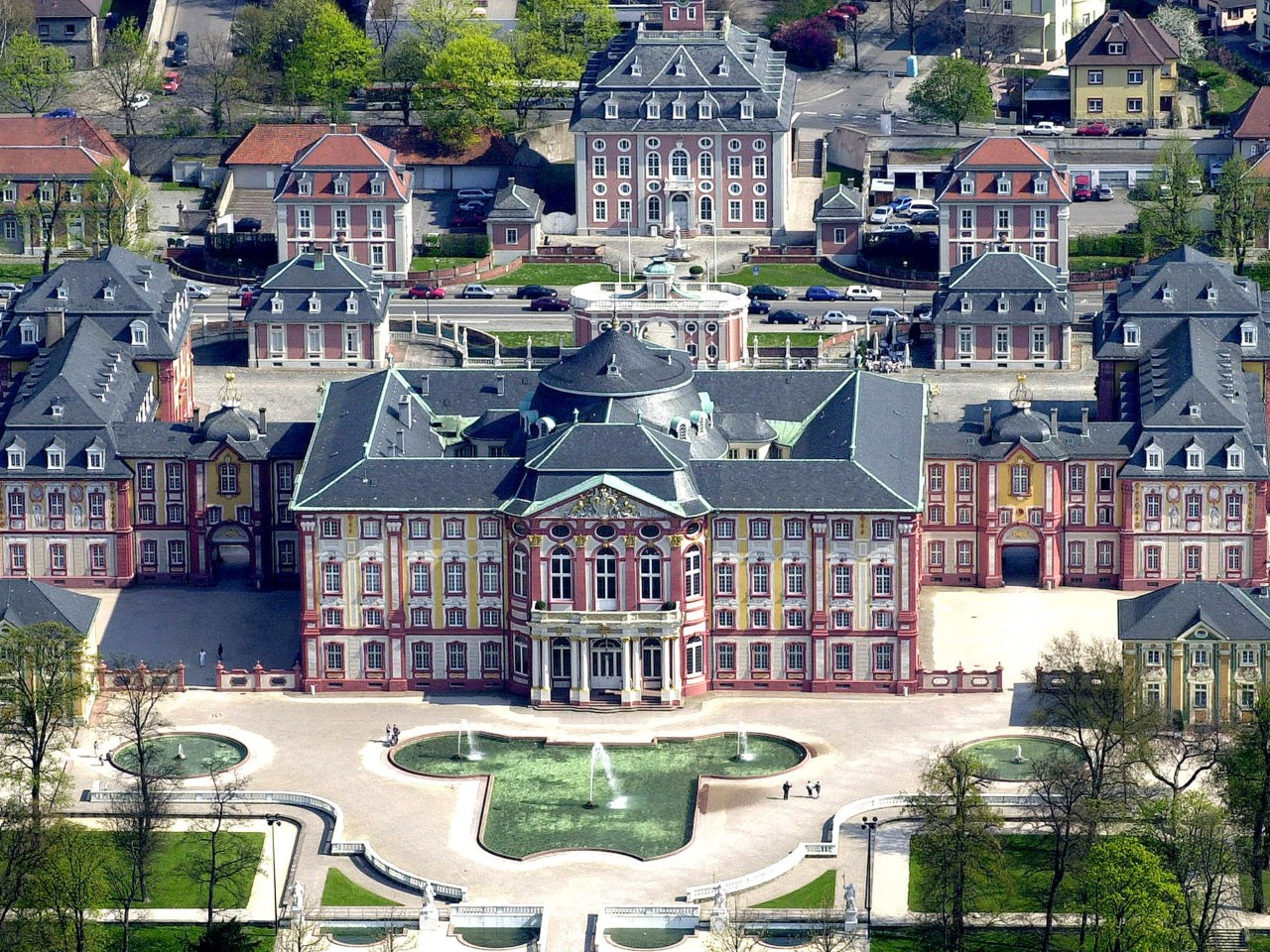
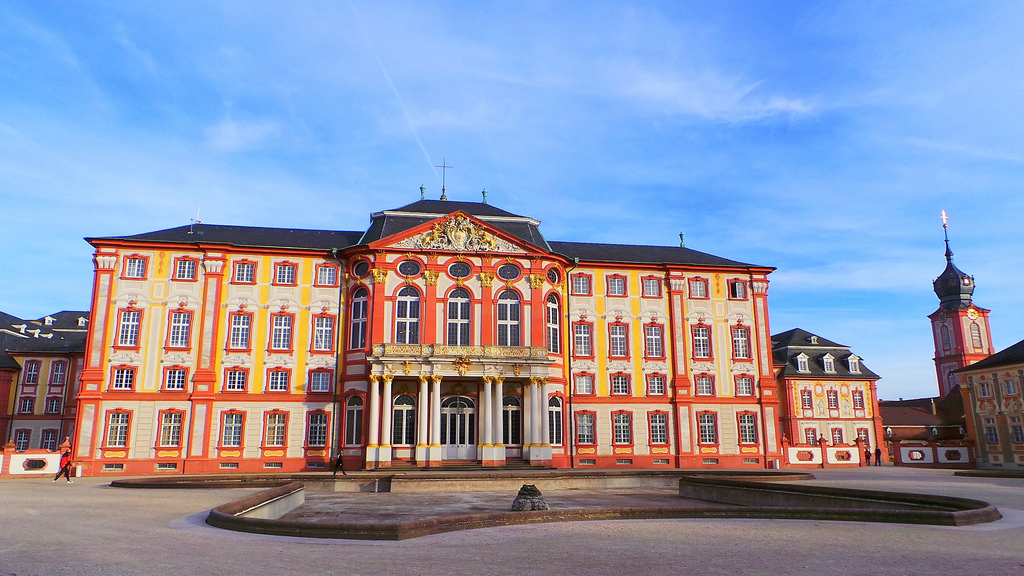
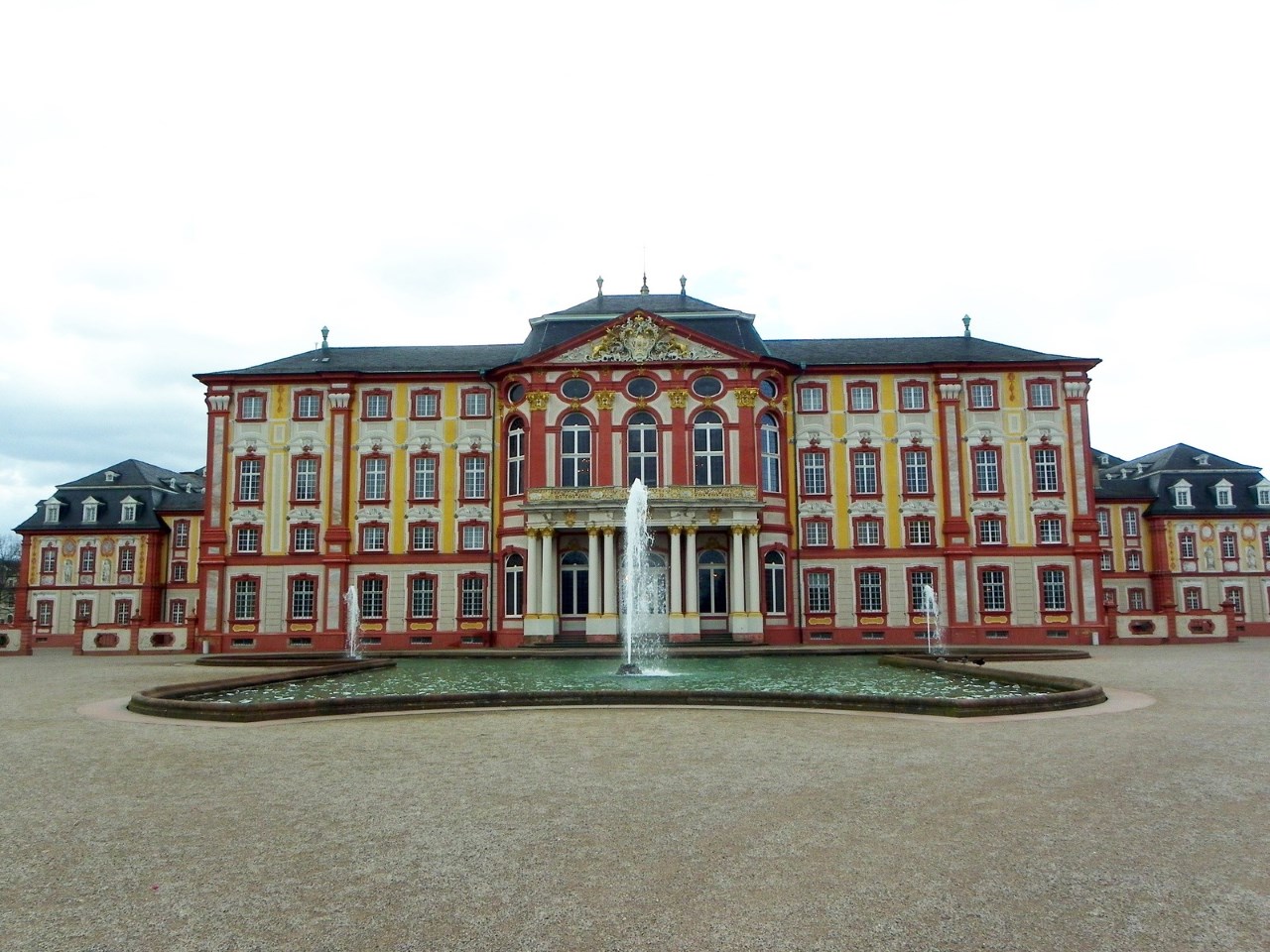
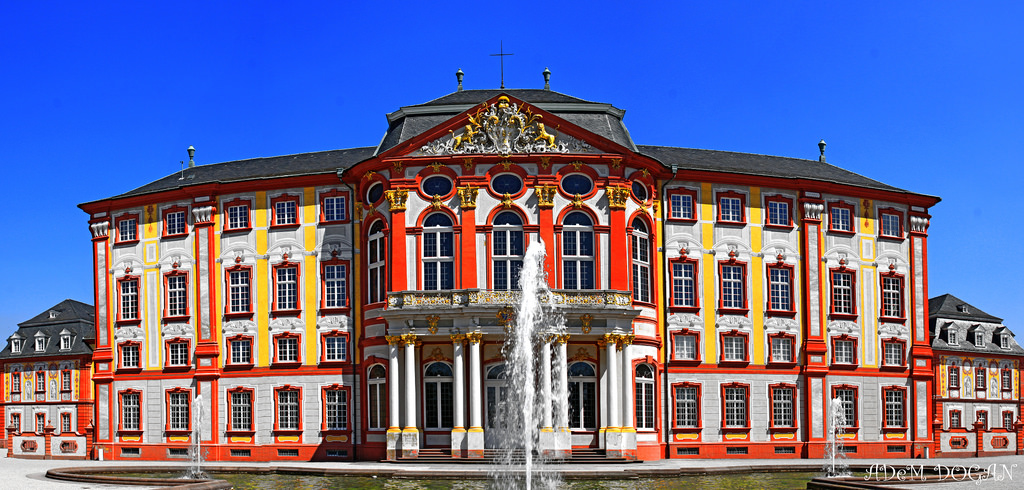
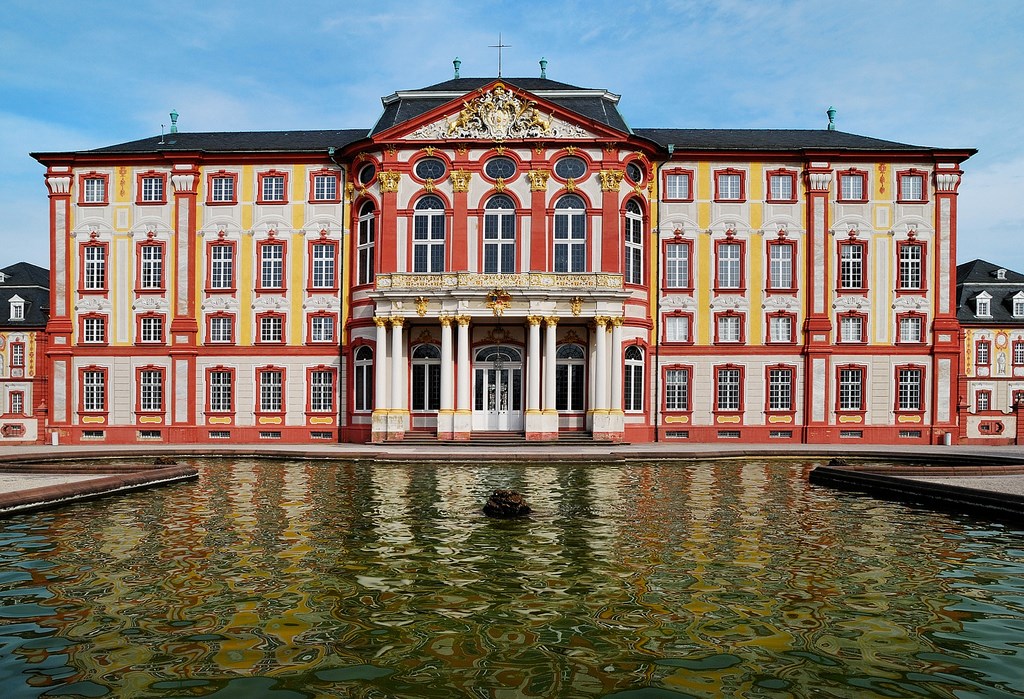
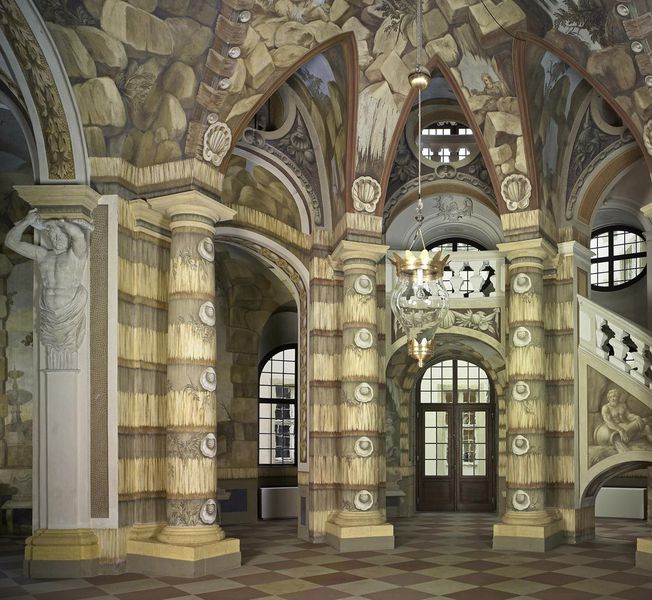
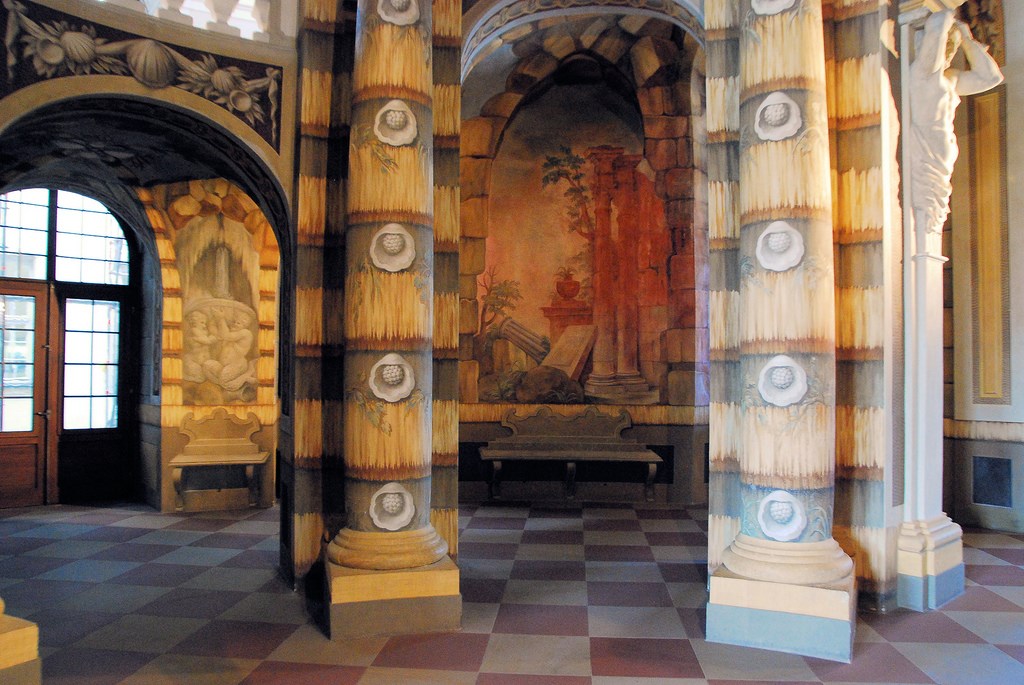
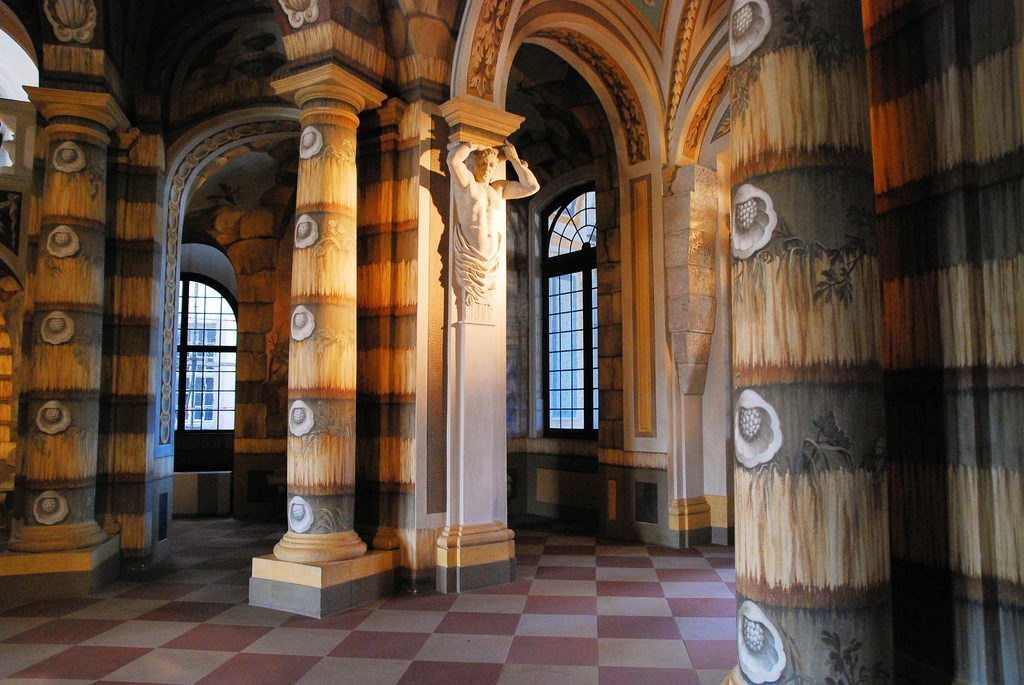
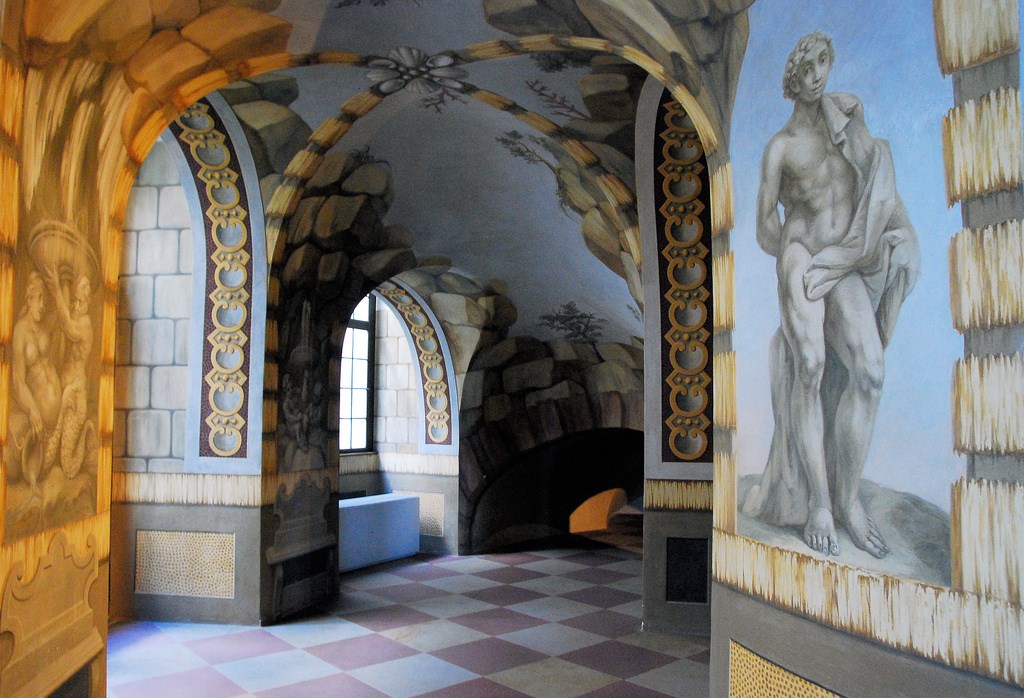
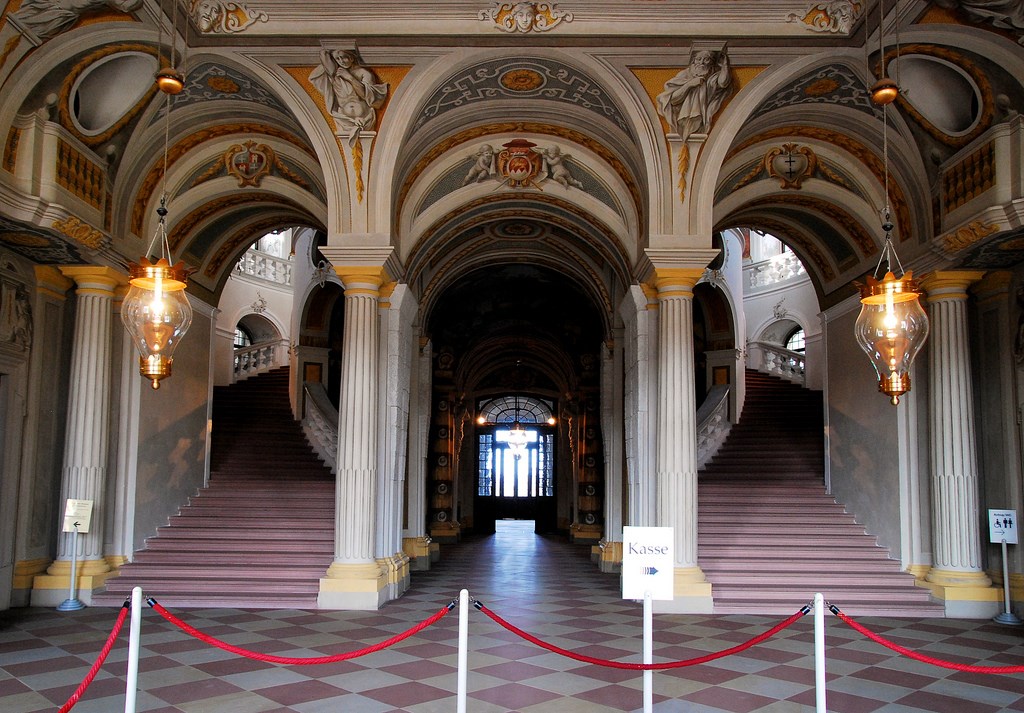

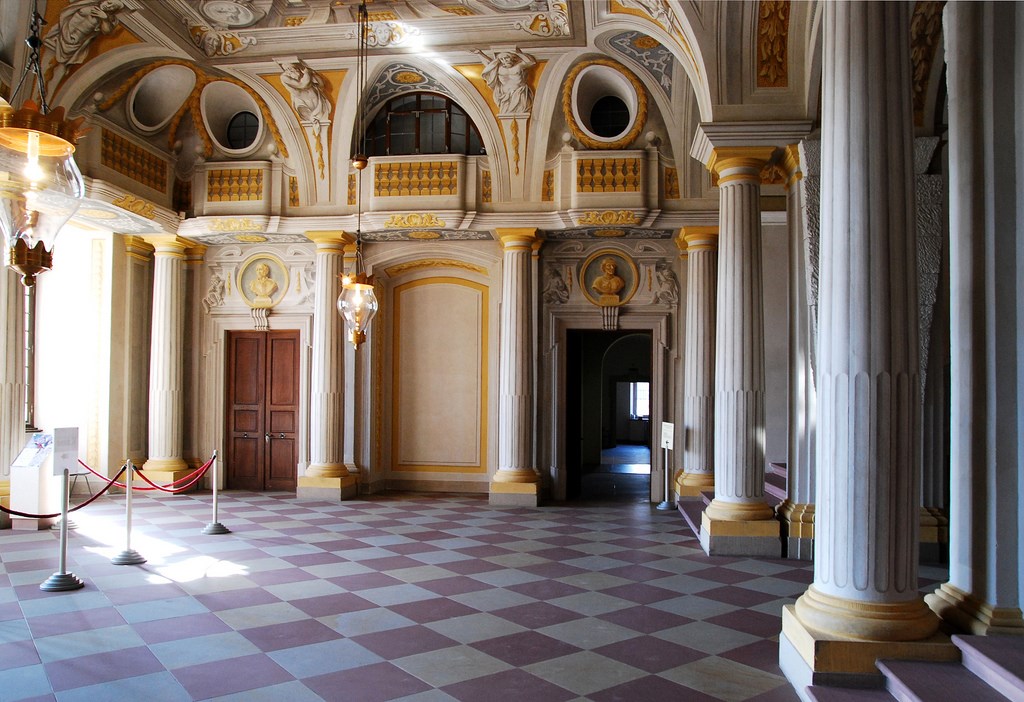
BRUCHSAL PALACE
Baroque Restoration of the Prince Bishop
Bruchsal Palace is one of the most beautiful examples of Baroque palaces in western Germany and the only religious residence in the region of the Upper Rhine, but its beauty today is the result of a massive reconstruction and recovery project. This area of the Rhineland was devastated by allied carpet bombing in 1945 and the palace complex was reduced to near rubble. A permanent exhibit inside tells the story of the restoration "Bruchsal Palace, Built, Destroyed and Raised Again" including the recovery of original designs, and the use of old handicraft techniques used, seen in workshop scenes and work sequences.
The Bruchsal Palace (Schloss Bruchsal), modeled on the French Palace of Versailles was built for the Prince Bishop Damian Hugo of Schönborn, the Bishop of Speyer. The wealthy bishop who ruled the region of southwestern Germany built a succession of palaces. The Bishop’s residence palace in Speyer was destroyed in 1689 during the Palatine War of Succession which saw many of the areas old medieval castles brought to ruin (see Frankenstein and Castle Hardenburg ). Following the war, the free Imperial City of Speyer was the central focus of the Protestant Reformation in the Upper Rhine (see Speyer Cathedral) and to avoid conflict with the Prince Bishop decided to remove his palace residence to the smaller city of Bruchsal.
The original plan called for 50 separate buildings to reduce the risk of fire destroying more than one. Construction was begun in 1721 and continued until the Bishop’s death in 1743. Several local architects were employed in the building, including Maximilian von Welsch, Anselm Franz Freiherr von Ritter zu Grünstein, and ultimately the famous Balthasar Neumann. Some of the rococo elements of the staterooms were added by Schönborn’s successor Cardinal Christoph von Hutten from 1751 to 1754. After the end of the religious absolute rule of the Prince Bishops, the palace passed into secular hands in 1803. From 1810 to 1832 the widow of the Baden Margrave, Countess Amalie von Baden, lived in a part of the palace, but thereafter stood empty for years, with some buildings used for government purposes until the World War Two bombing of March 1945. The state of Baden-Württemberg began restoring the palace in 1964, returning much of its former glory over two decades.
The fame of Bruchsal Palace is based on its inner rooms with their masterful room conceptions and decorations with the fantastic three dimensional illusion paintings by the fresco painter Giovanni Francesco Marchini and the staircase of Bruchsal Palace has been called "the queen of staircases" leading to ornate and fantastic banquet halls and state rooms, the Prince’s hall and the Marble Hall, representing the refinements of the rococo art at its peak.
Visiting Bruchsal Palace
The reconstructed state rooms of Bruchsal can be visited on guided tours by appointment and the smallish gardens offer some beautiful photo opportunities. In addition, the German Music Machine Museum (Deutsches Musikautomaten Museum) and the History Museum of the City of Bruchsal are both located inside. Bruchsal is about halfway between Karlsruhe and Heidelberg along the A5 autobahn. The Maulbronn Monastery is nearby (see Maulbronn Medieval Monastery) on the back road route to Stuttgart
http://www.bargaintraveleurope.com/12/Germany_Bruchsal_Palace_Baroque.html
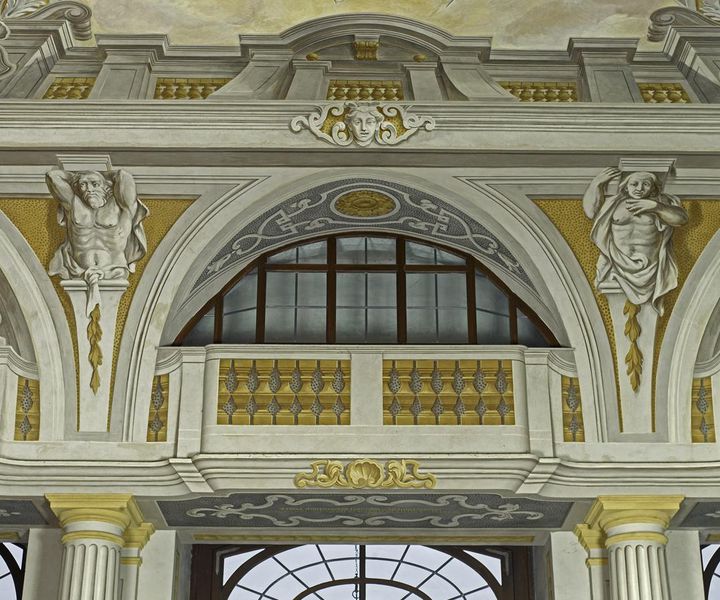
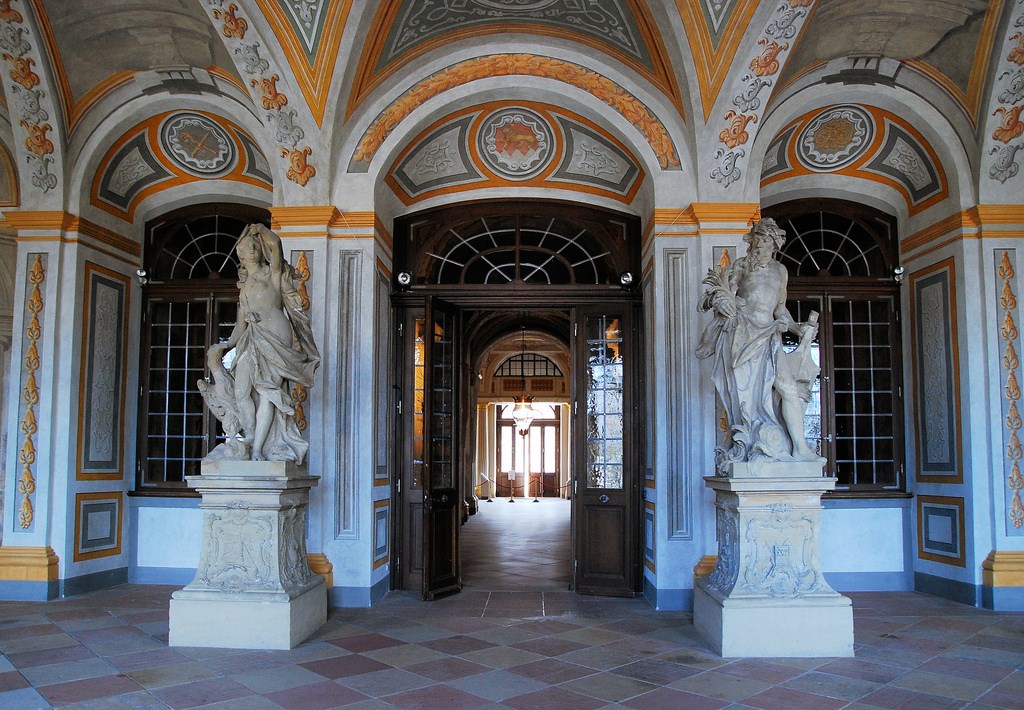
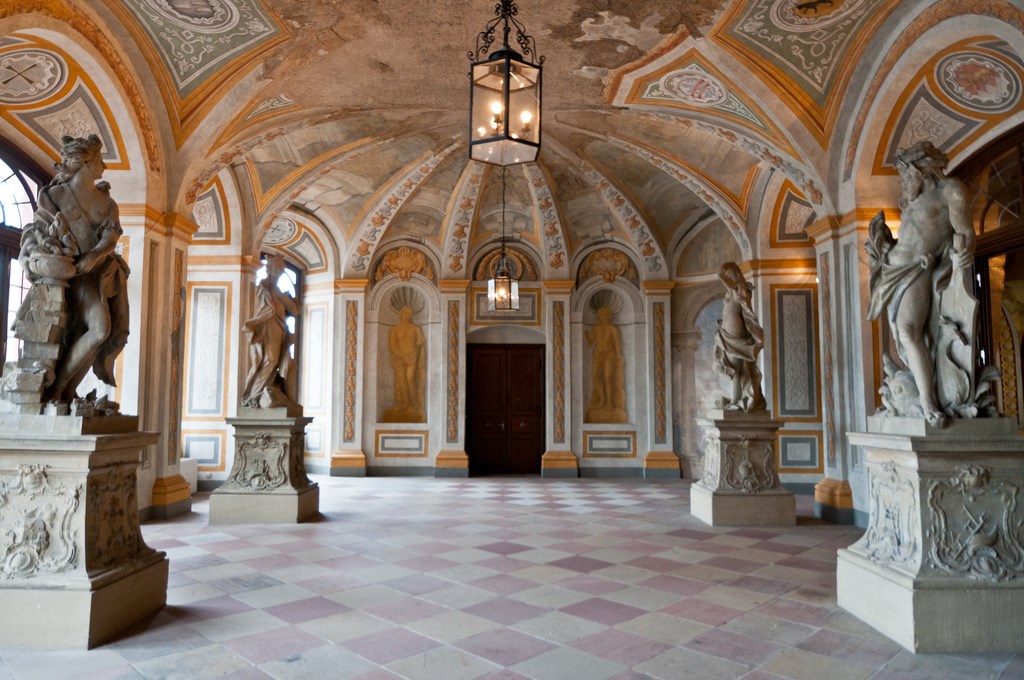
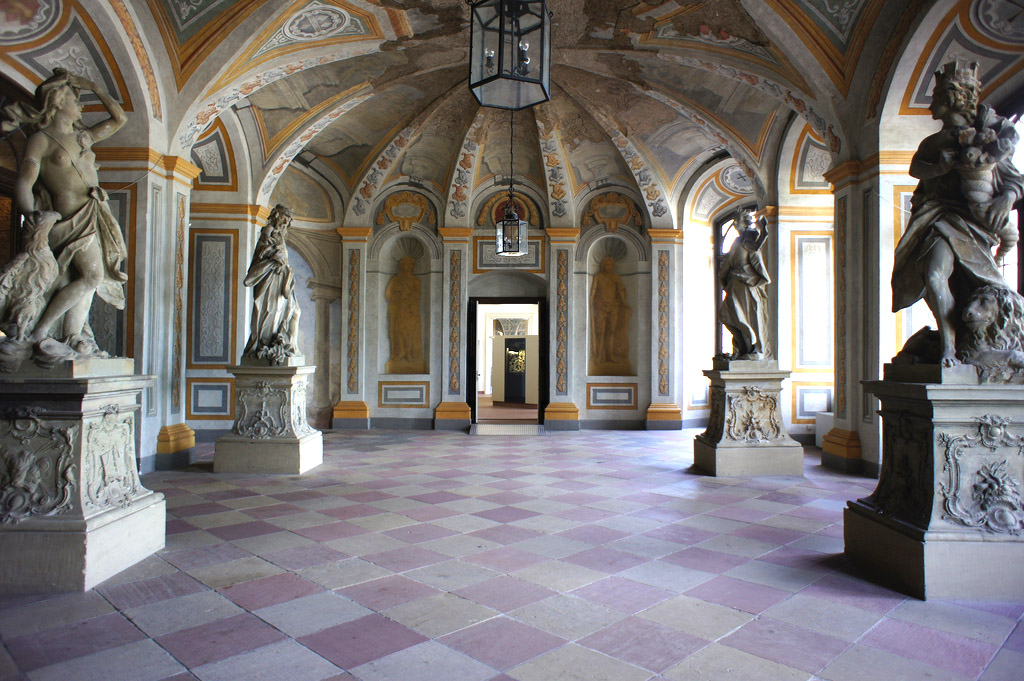
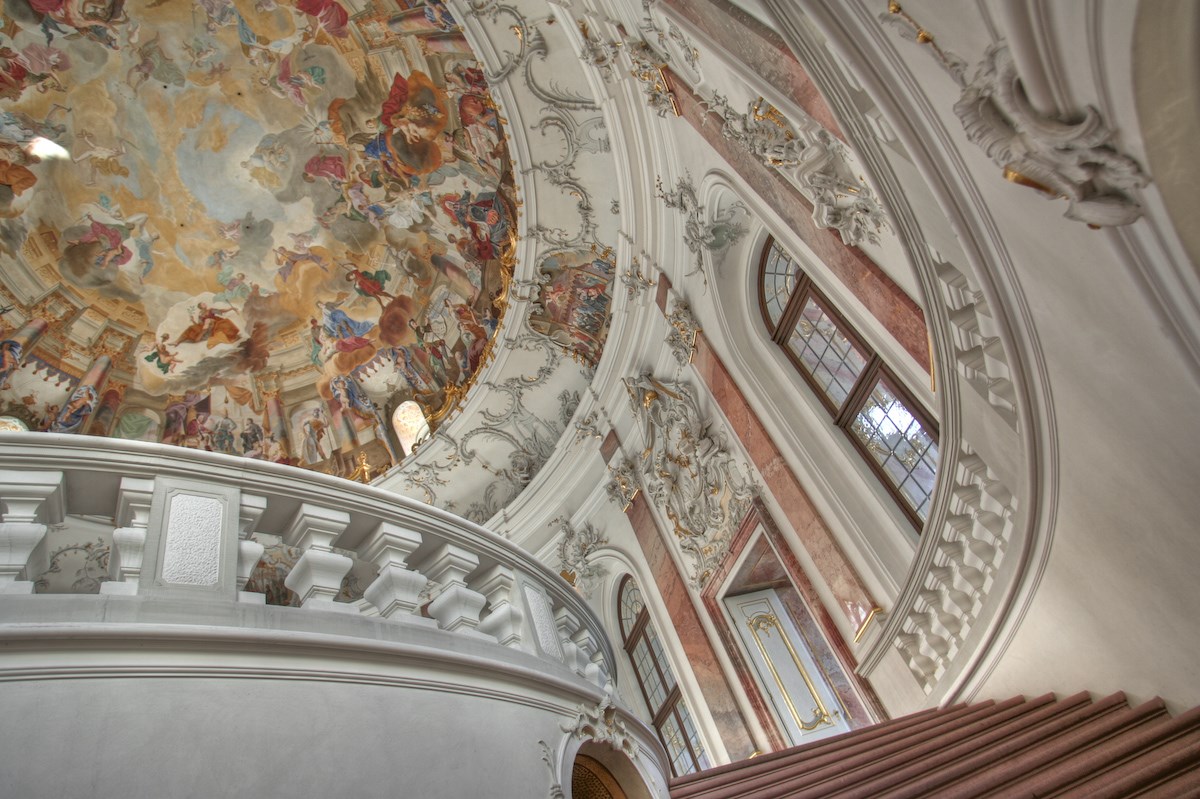
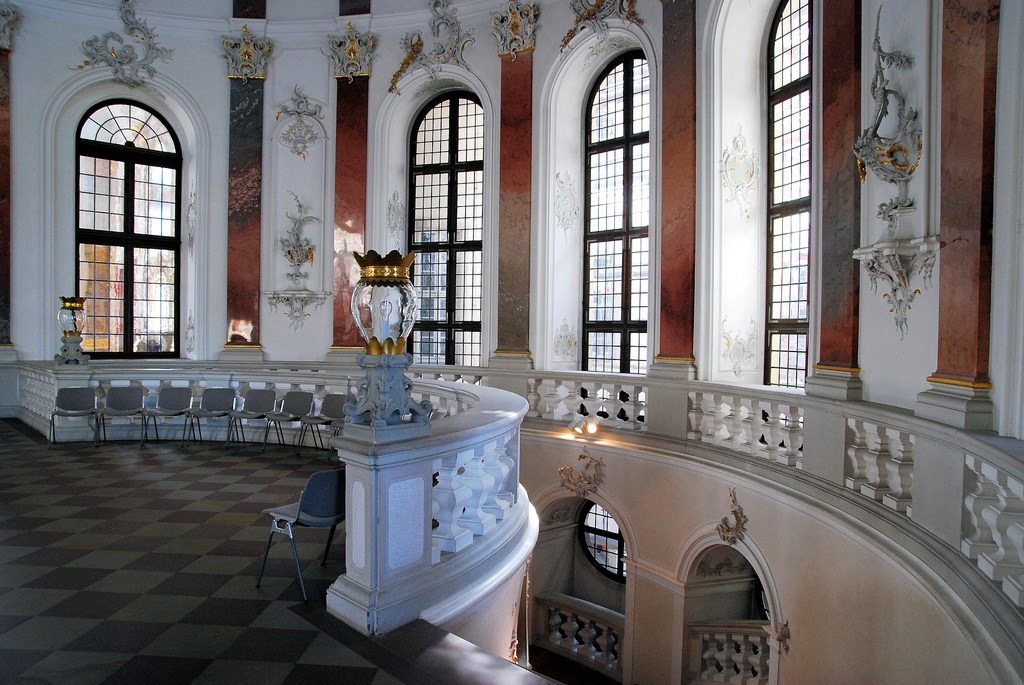
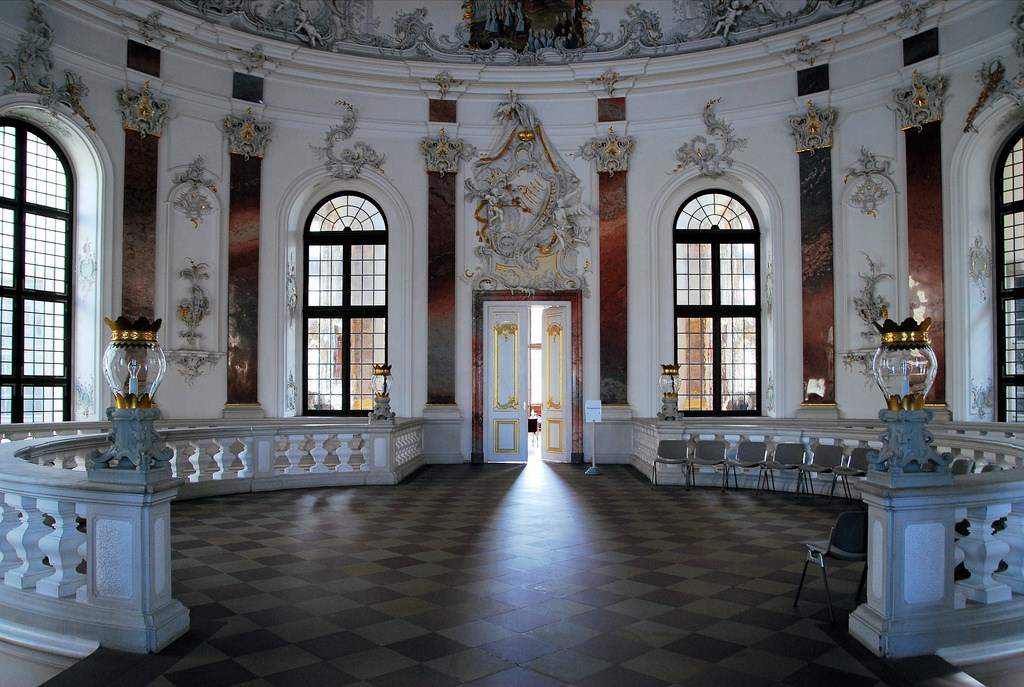
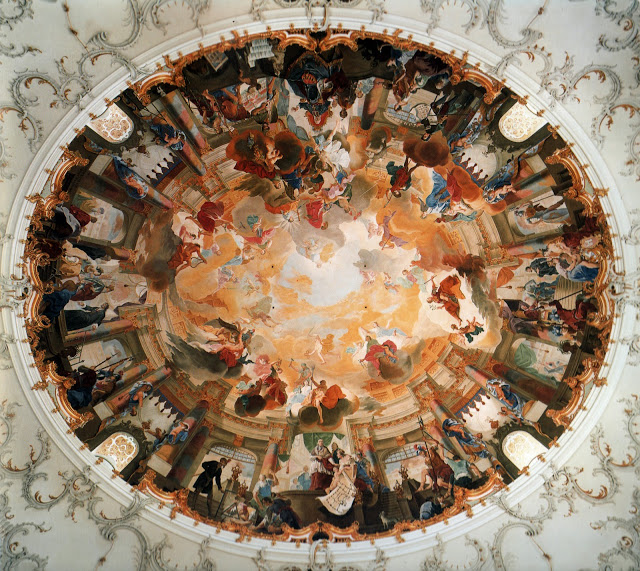
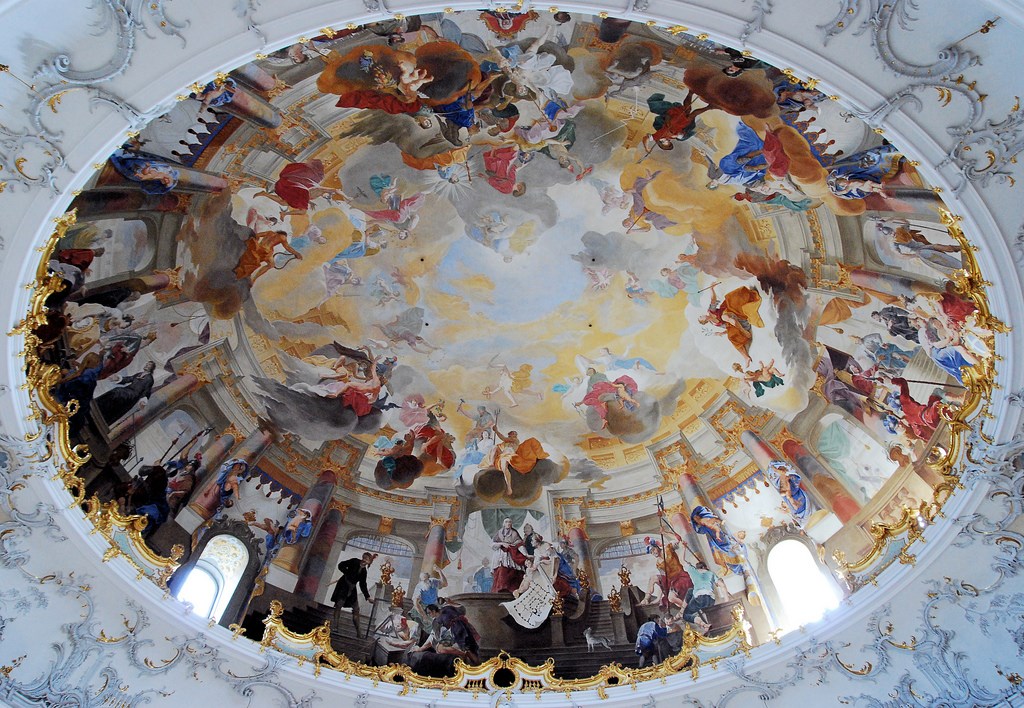
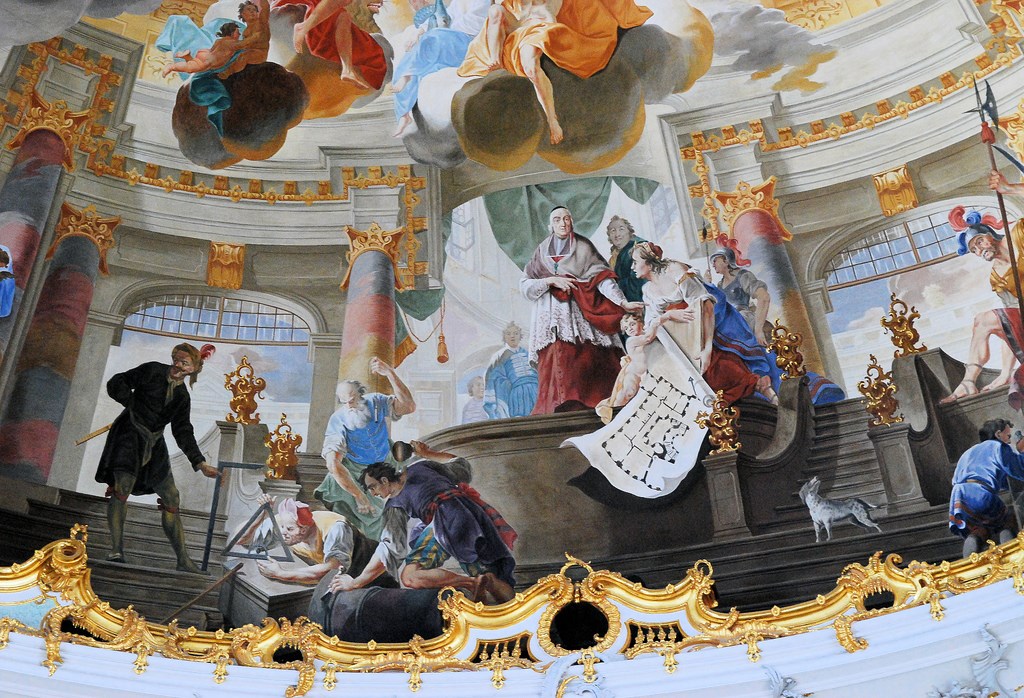
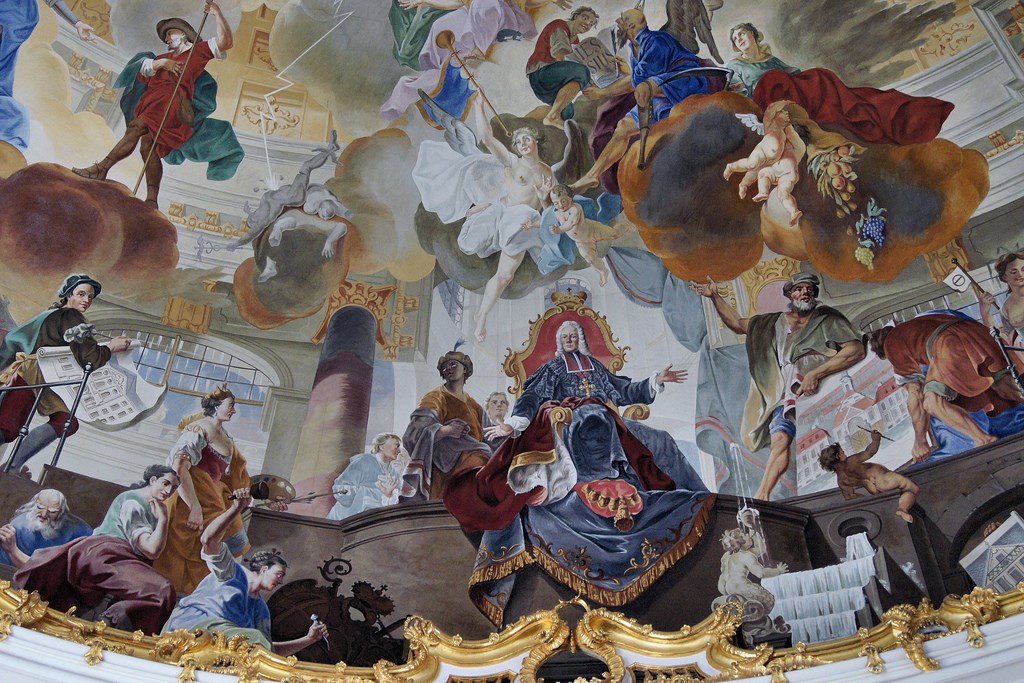
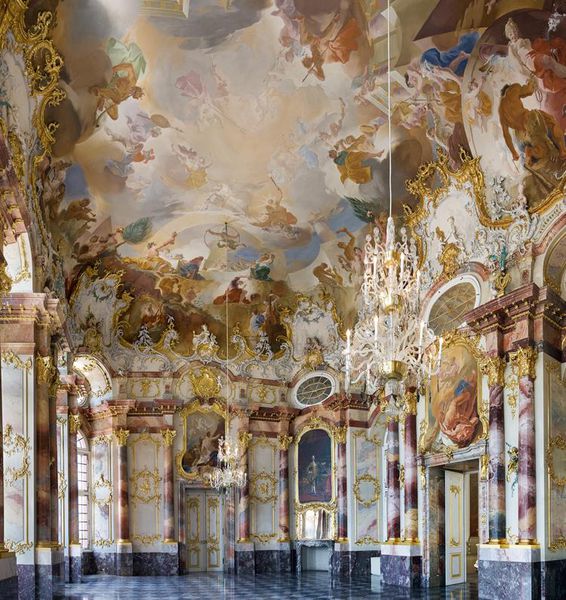
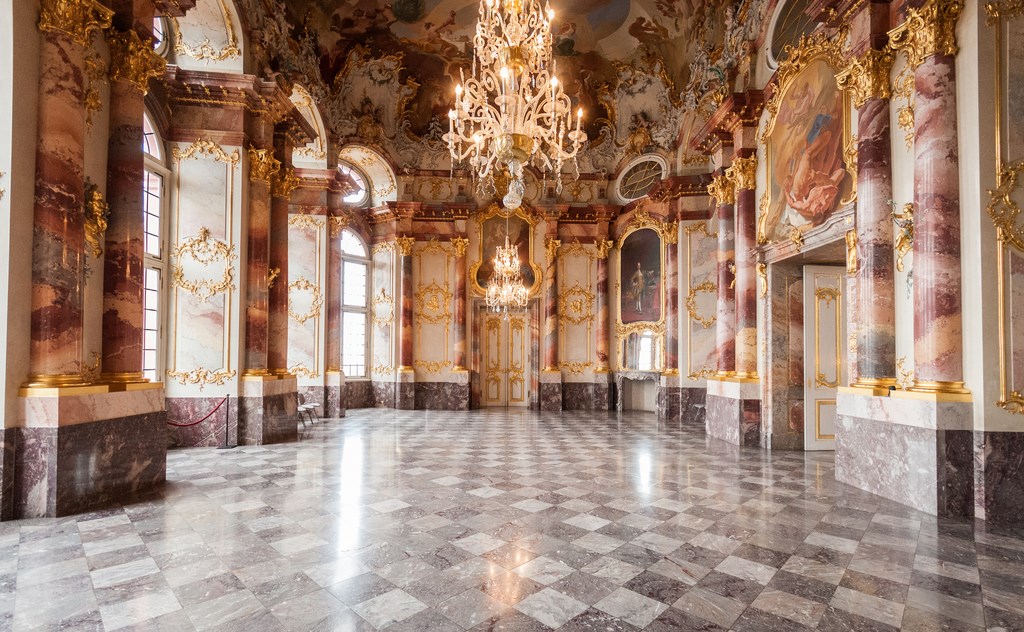
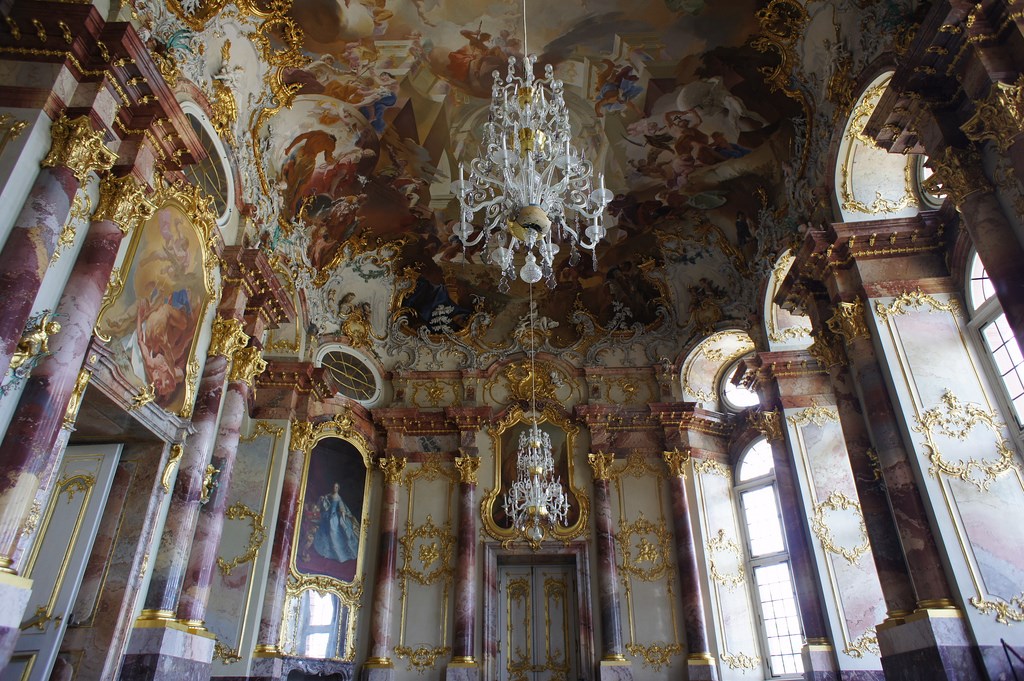
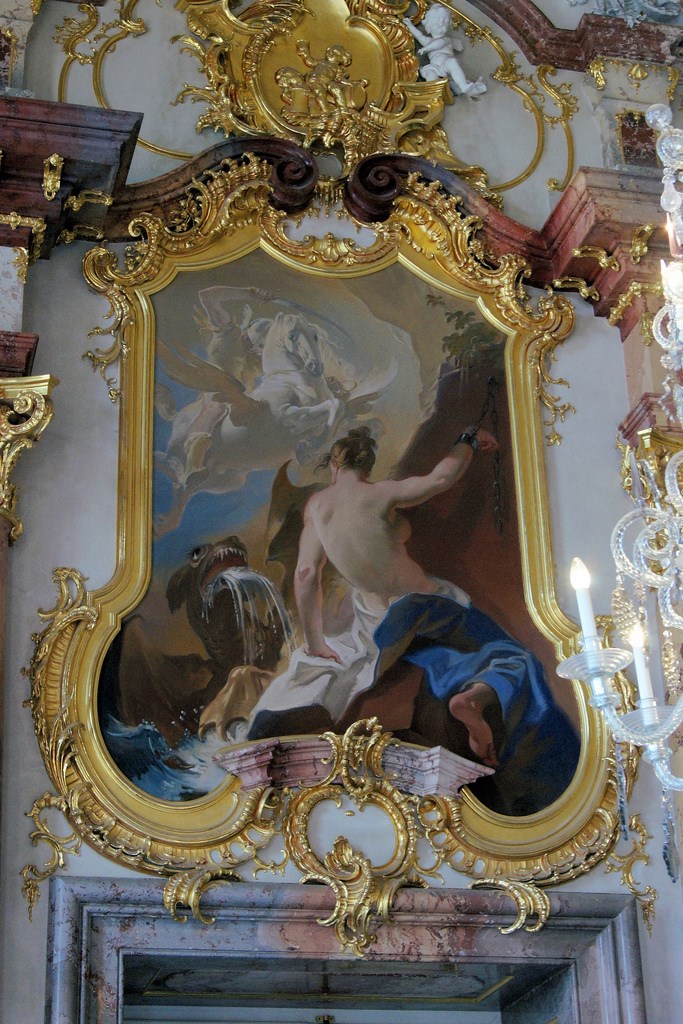
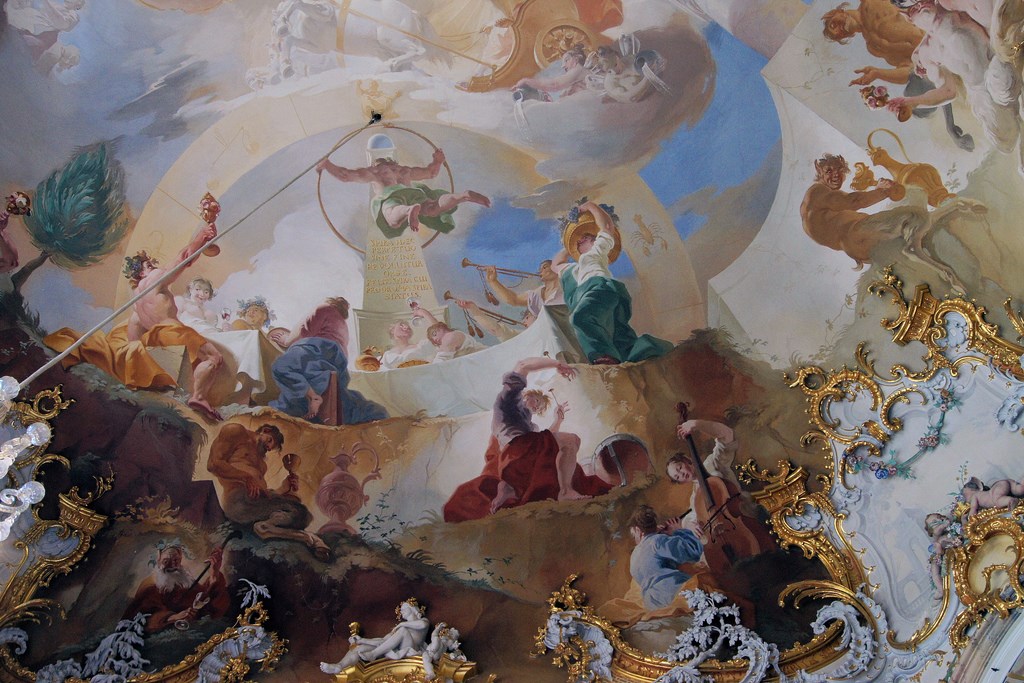
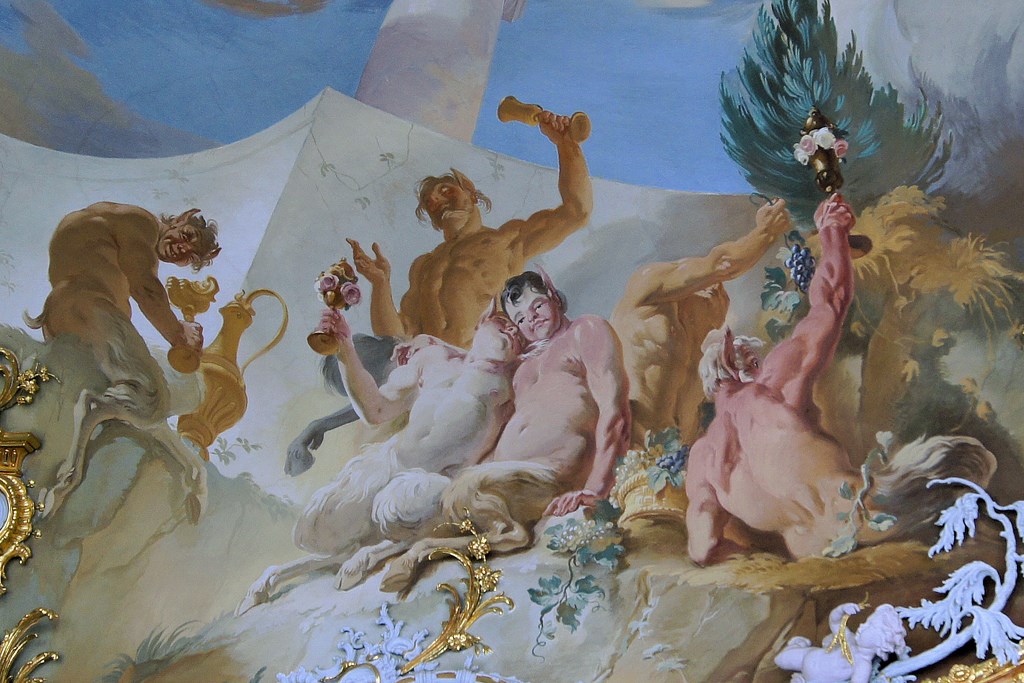
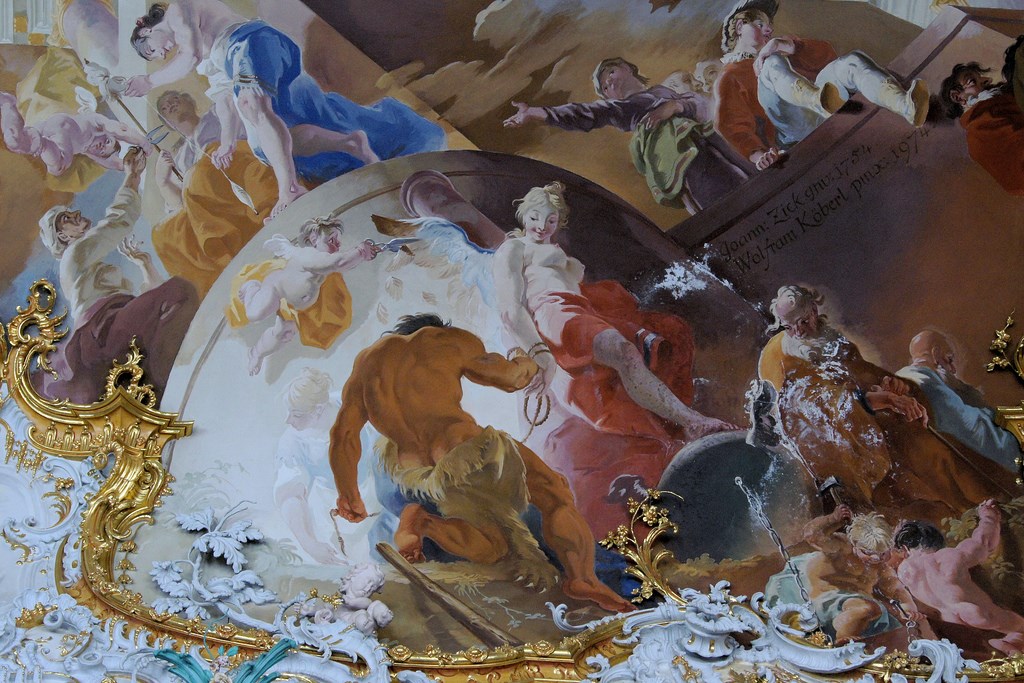
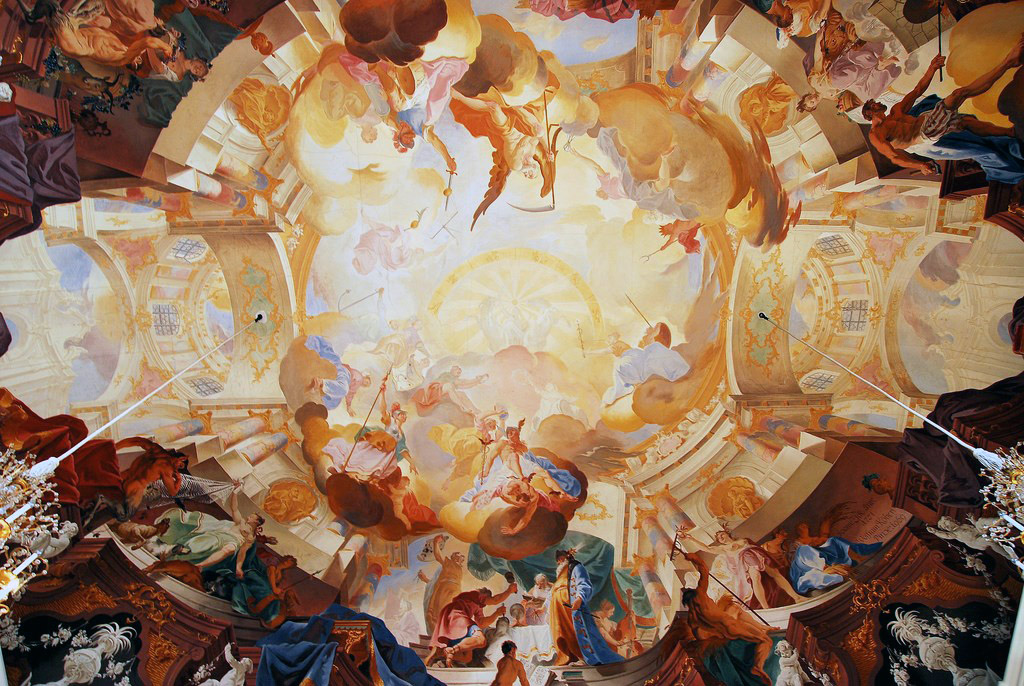
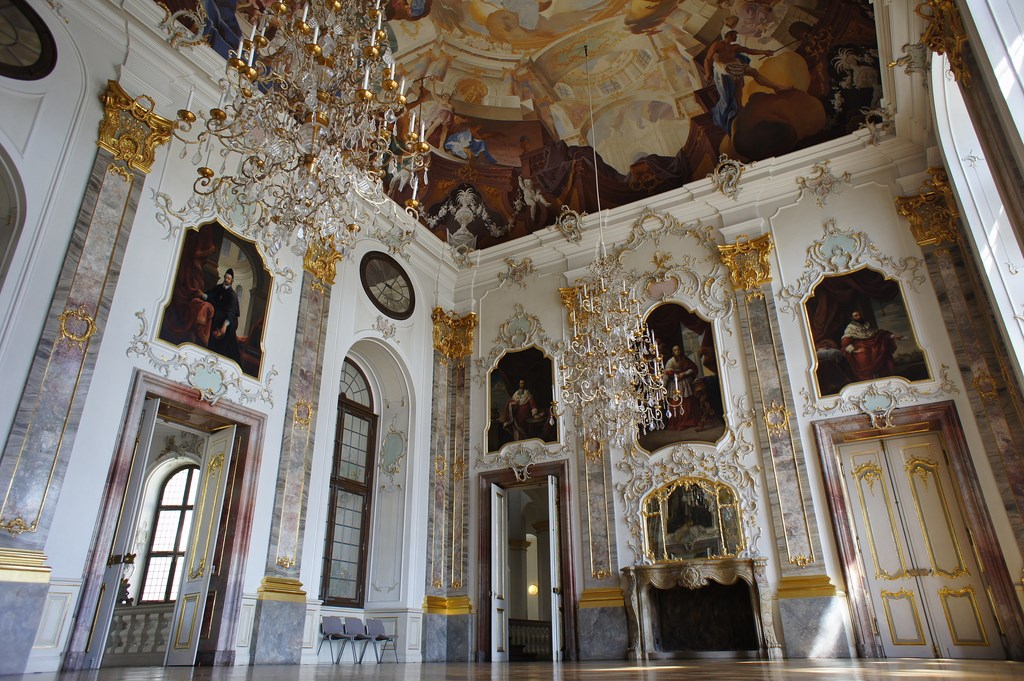
Schloss Bruchsal (Brushsal Castle)
Bruchsal Castle is a German palace in the town of Bruchsal, situated about 25 km south of Speyer between Heidelberg and Karlsruhe, in Baden-Württemberg.
Schloss Bruchsal History
When Damian Hugo Schönborn was elected Prince–Bishop of Speyer in 1719, he initially intended to rebuild the destroyed bishop’s palace that was attached to the north flank of Speyer Cathedral, but the project brought him into conflict with the Protestant municipal authorities.
He then decided to construct a new Residenz on the northern edge of Bruchsal, which had been part of the bishopric of Speyer since the 11th century.
As war could be expected at any time in the area, the Residenz complex was to consist of individual buildings separated from one another and grouped around courtyards, an arrangement that would help to control the spread of fire. Plans were procured from Maximilian von Welsch.
In 1728 Johann Georg Stahl (1687–1755) was appointed architect for the Speyer bishopric, and he continued to oversee building operations on the site until his death.
The central block of Schloss Bruchsal was designed in 1725 by a young architect, Anselm F. Ritter zu Groenesteyn. During the summer of 1726 Damian Hugo decided that a mezzanine should be inserted between the ground and main floors.
This created insurmountable problems for Ritter zu Groenesteyn, who was unable to make his circular staircase (for which the foundations were already in place) accommodate the extra height, and he soon resigned from the project.
He was replaced by Balthasar Neumann, who was consulted on all major design decisions. From 1728 he took over such utilitarian structures as the riding hall, arsenal and water system, but his most important contributions were the court and garden façades of the palace and its staircase with adjoining spaces and formal rooms.
Neumann articulated the middle sections of the palace façades with pilasters and string courses that framed large windows and glazed doors, giving the impression of a masonry frame containing large sheets of glass.
In 1743 he was succeeded by Franz Christoph von Hutten, who completed the building and the décor of many of the interiors at Schloss Bruchsal. The vaults of the Fürstensaal (prince’s hall) and marble hall, and the stair dome were frescoed by Johann Zick and his son, Januarius Zick between 1751 and 1754.
Later in the century, the formal garden was remodelled according to the English style. After the secularization of the bishopric in the early 19th century, Schloss Bruchsal was used by government officials.
Restorations in the early 1900s and 1930s provided detailed documentation of the existing complex; when the buildings were extensively destroyed in World War II, these records were available for the rebuilding project, which began in the 1960s.
http://www.everycastle.com/Schloss-Bruchsal.html
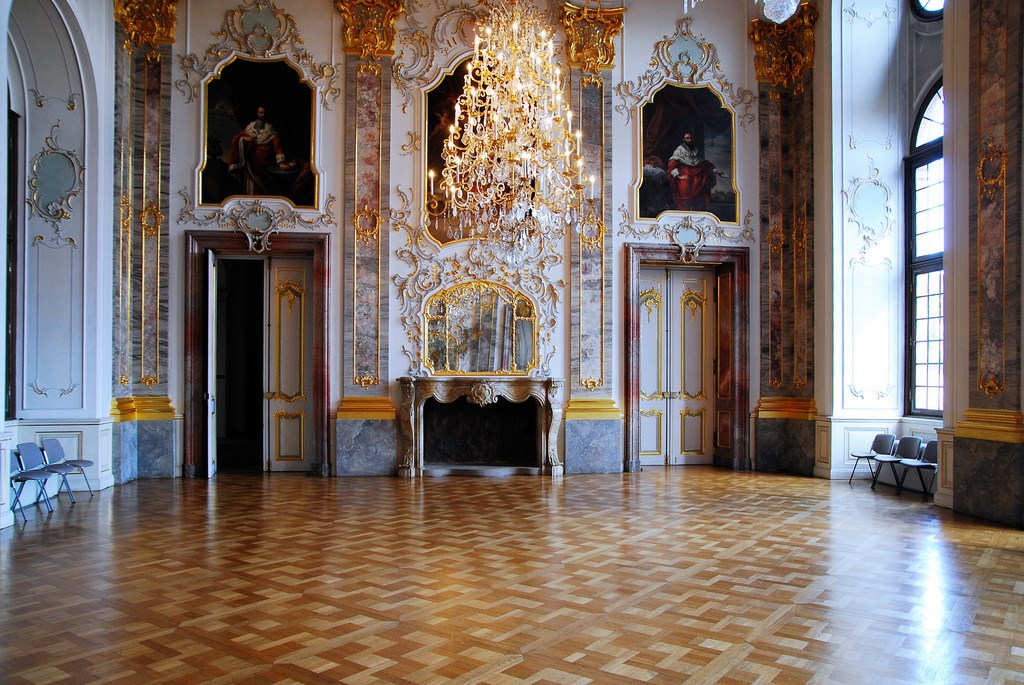
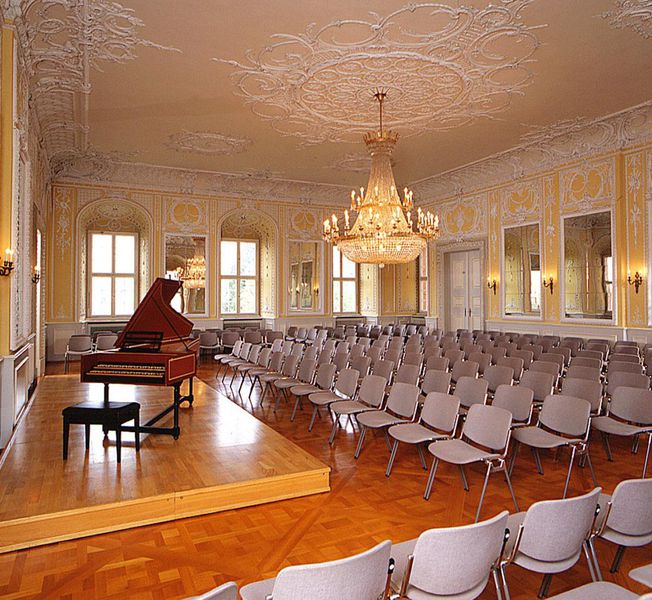
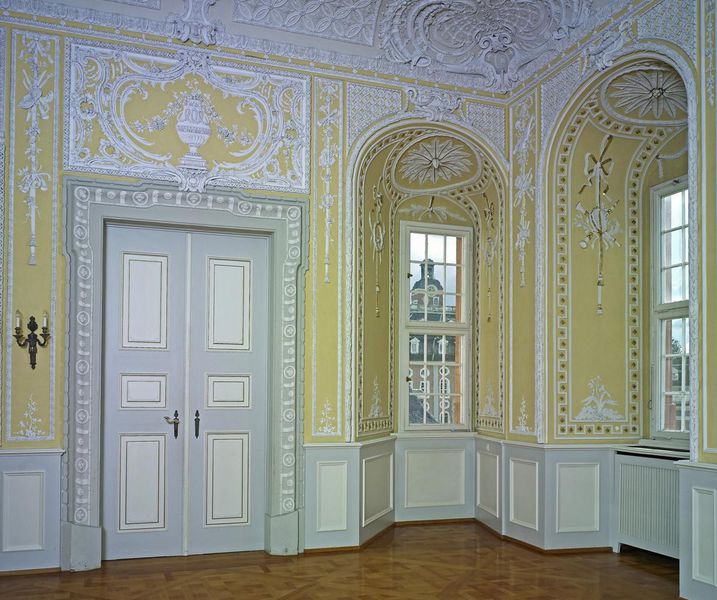
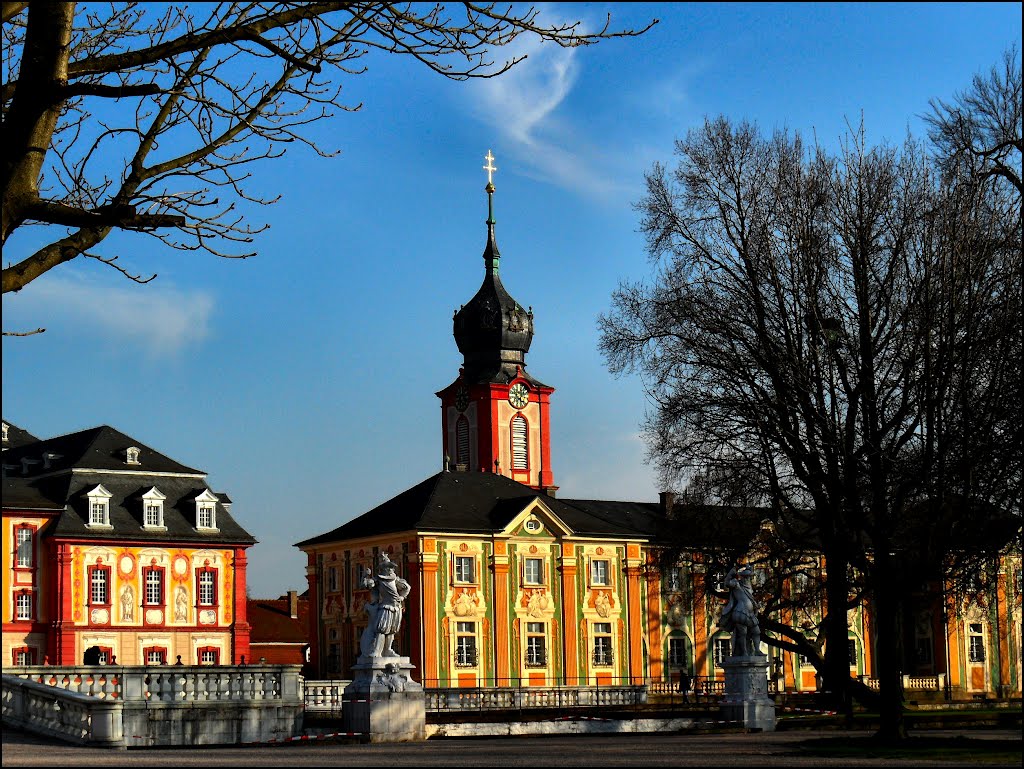
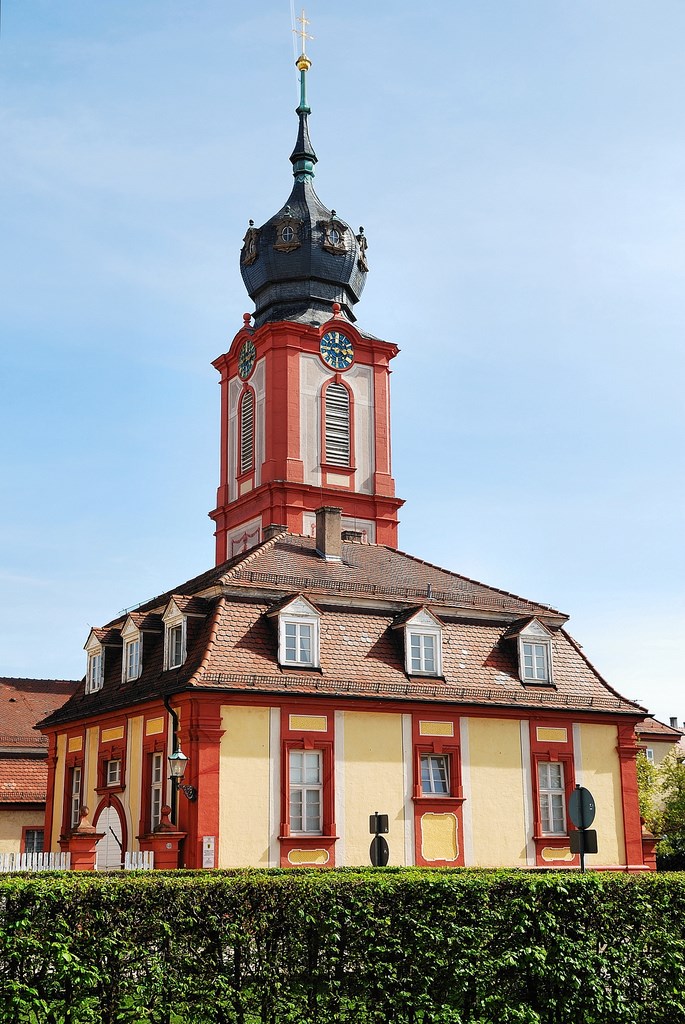
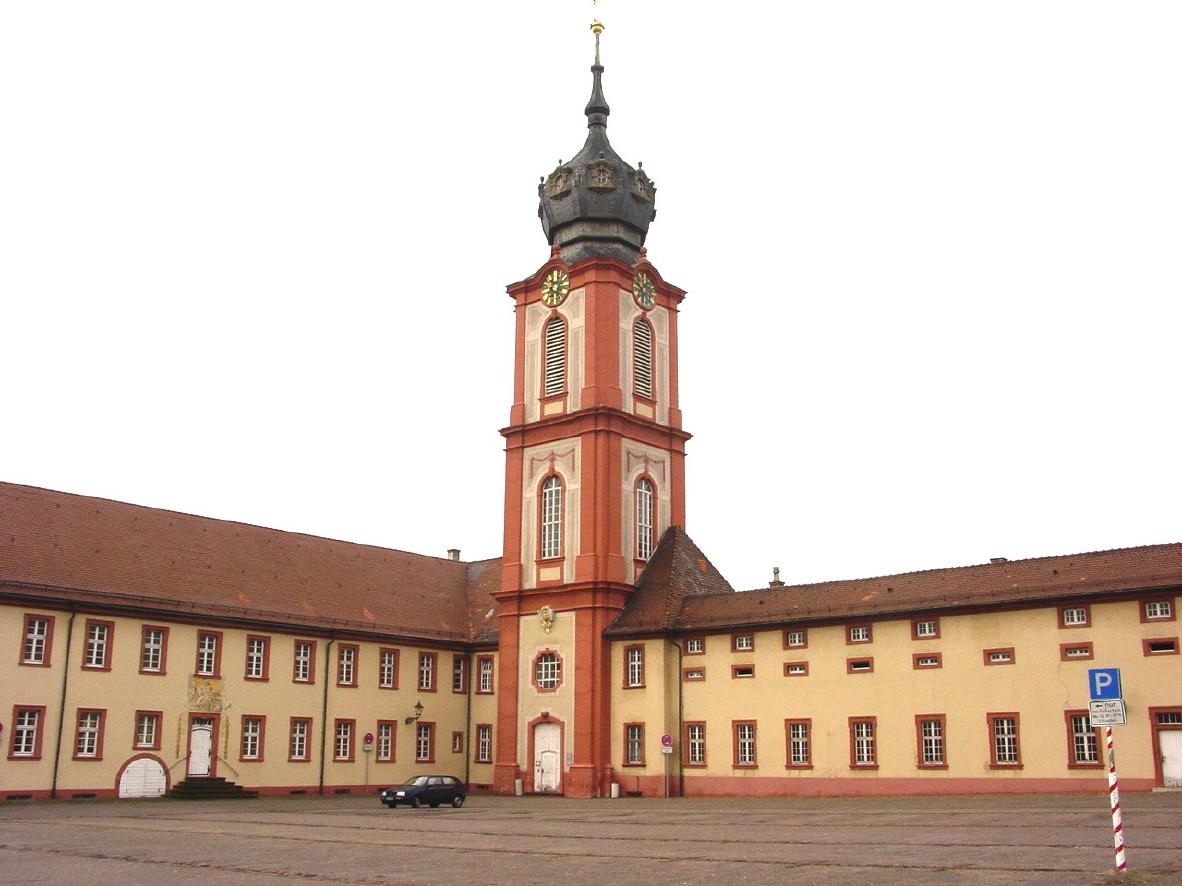

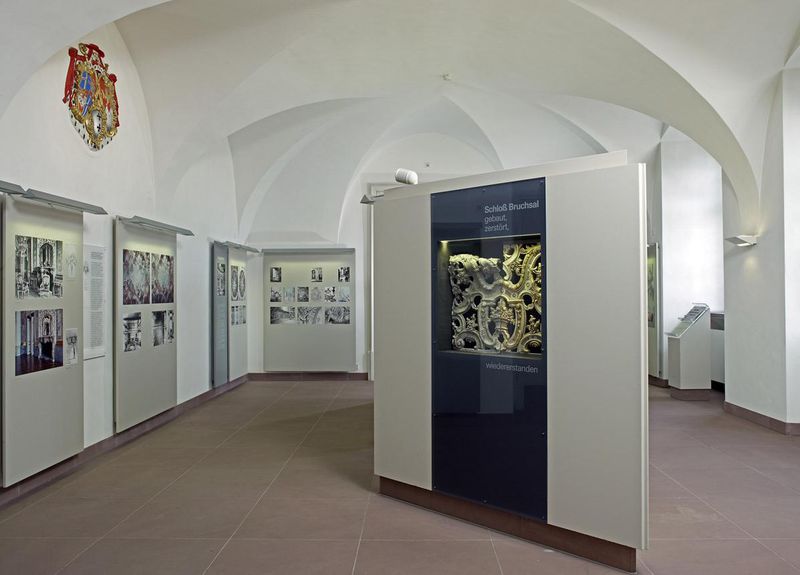
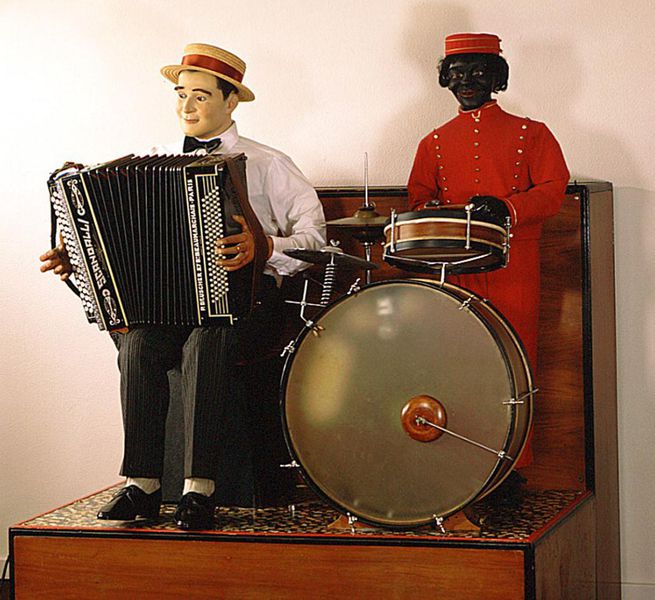
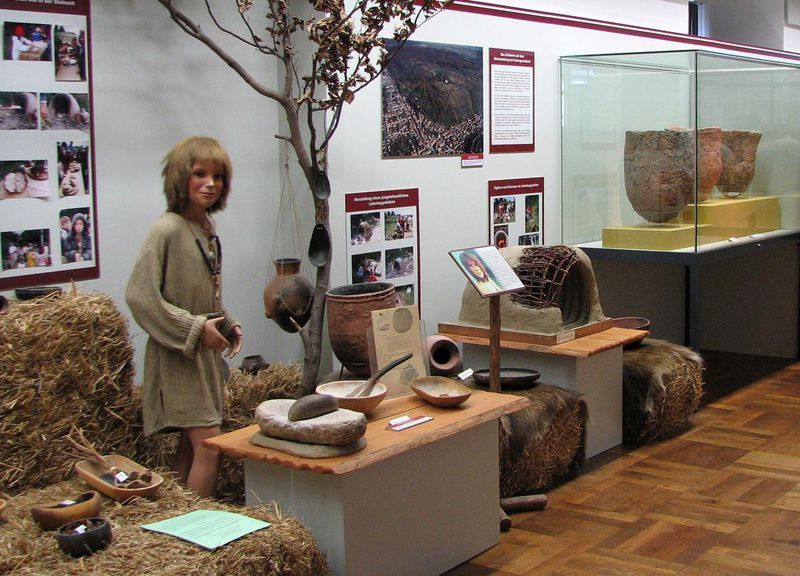
Bruchsal Palace was constructed in 1720 as a residence for the Prince-Bishops of Speyer. The then Prince-Bishop, Damian Hugo von Schönborn, an avid art collector, played an important role in planning the complex. The three-wing palace is built of sandstone. The collection of exquisitely matched buildings, along with the carefully laid out garden, make up an extraordinarily beautiful ensemble.
Visitors entering Bruchsal Palace’s cour d'honneur (three-sided grand courtyard) are greeted with a splendid and colourful sight. The buildings are lavishly painted, decorated with gold-plated stucco, and feature golden gargoyles in the shape of dragons. Construction of the famous staircase by Balthasar Neumann began in 1728. This stunning architectural masterpiece is unsurpassed in terms of its unique style and the poetry of its design. Franz Christoph von Hutten, who resided in the palace after Schönborn, made his mark by decorating the Fürstensaal (Prince’s hall), Marmorsaal (marble hall) and the exquisite Paradezimmer (grand rooms).
Painstakingly renovated
The palace complex was almost completely destroyed during the Second World War. Fortunately, the structure of the staircase was mostly preserved. The palace complex’s reconstruction was one of Baden-Württemberg’s most impressive projects of this kind. Today, Bruchsal Palace is more than a breathtaking example of Baroque architecture – it is also the outstanding result of carefully-planned, highly historically accurate reconstruction work. After visiting the palace’s corps de logis (main part of the building), we recommend you pay a visit to the German Museum of Mechanical Musical Instruments and the Bruchsal City Museum.
http://www.schloss-bruchsal.de/en/home/
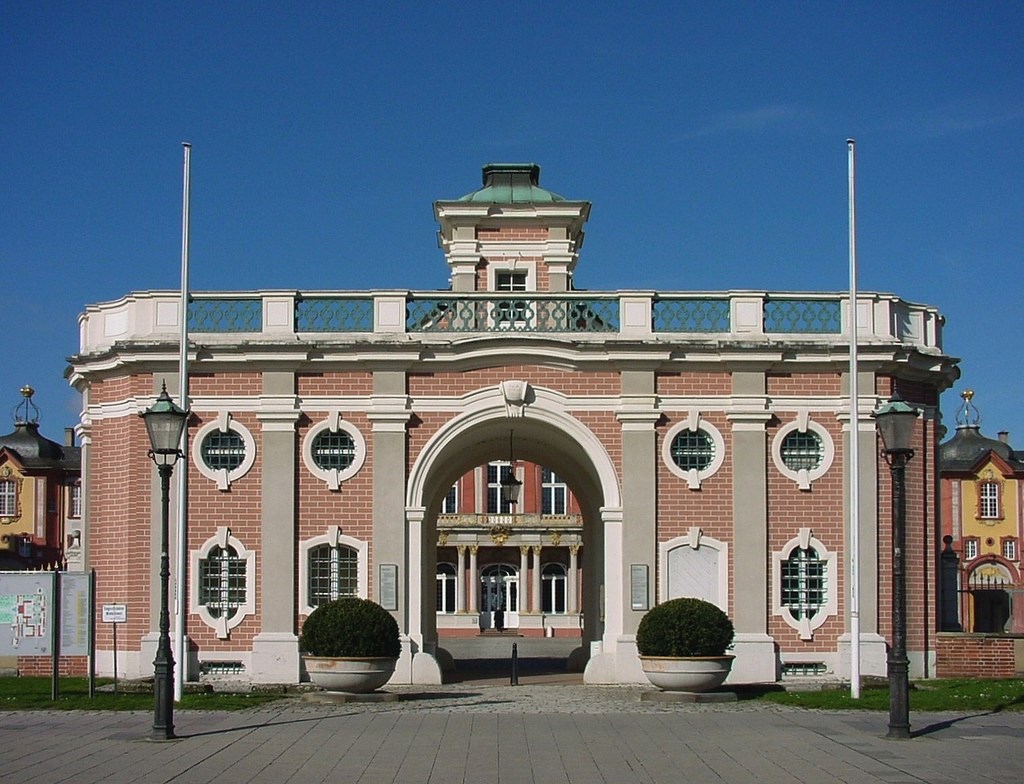
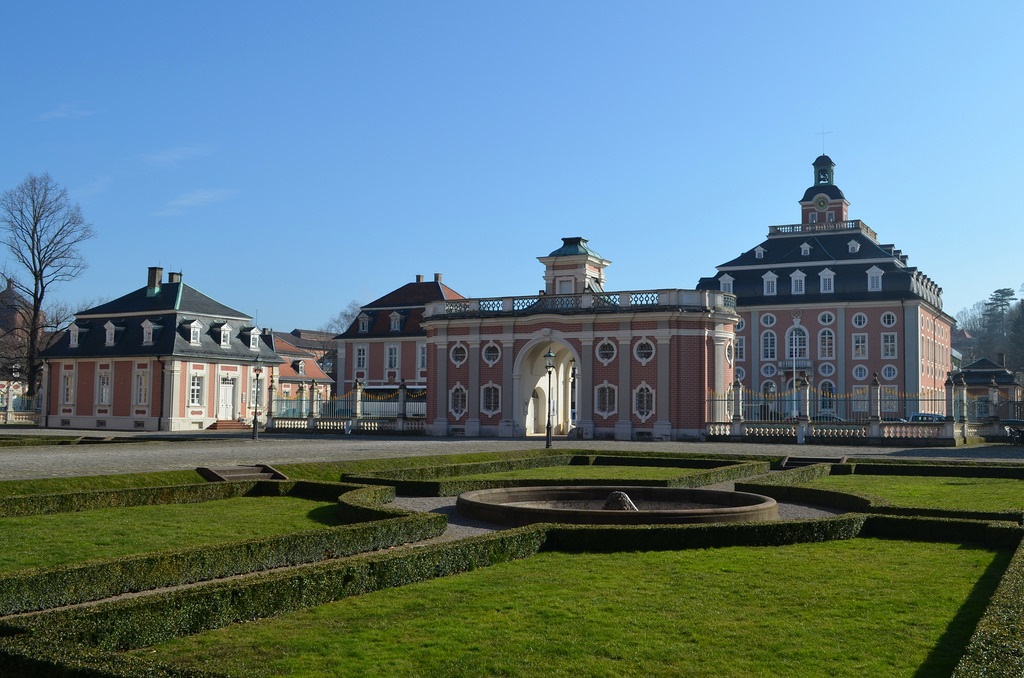
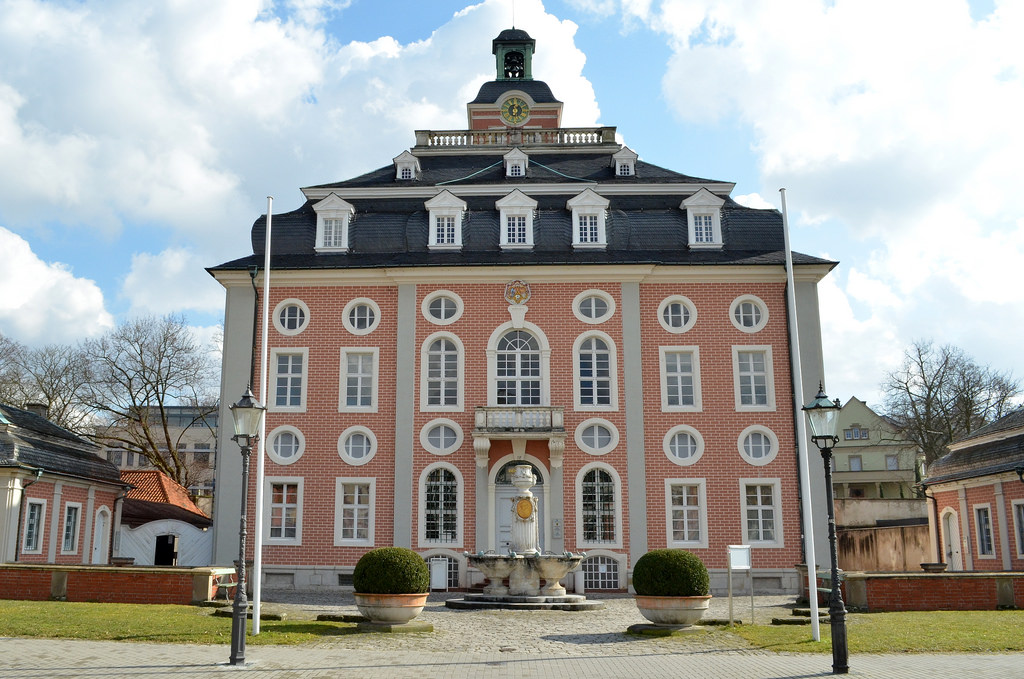
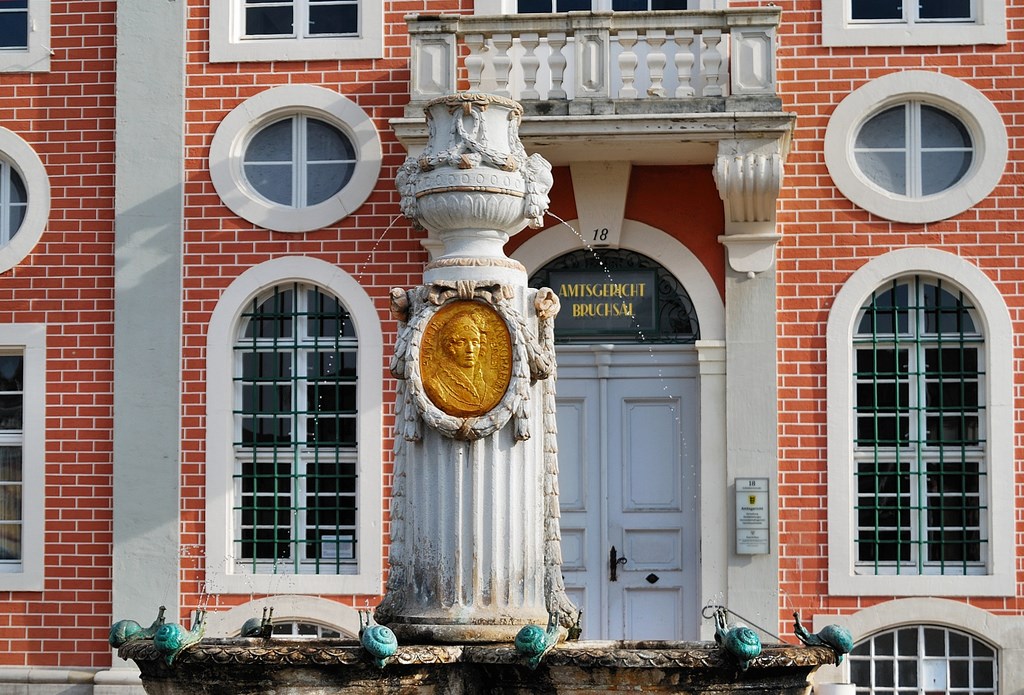
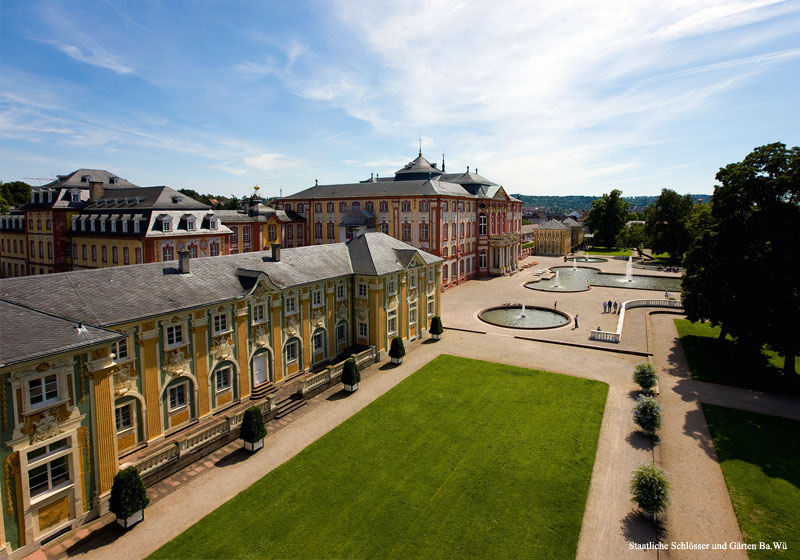
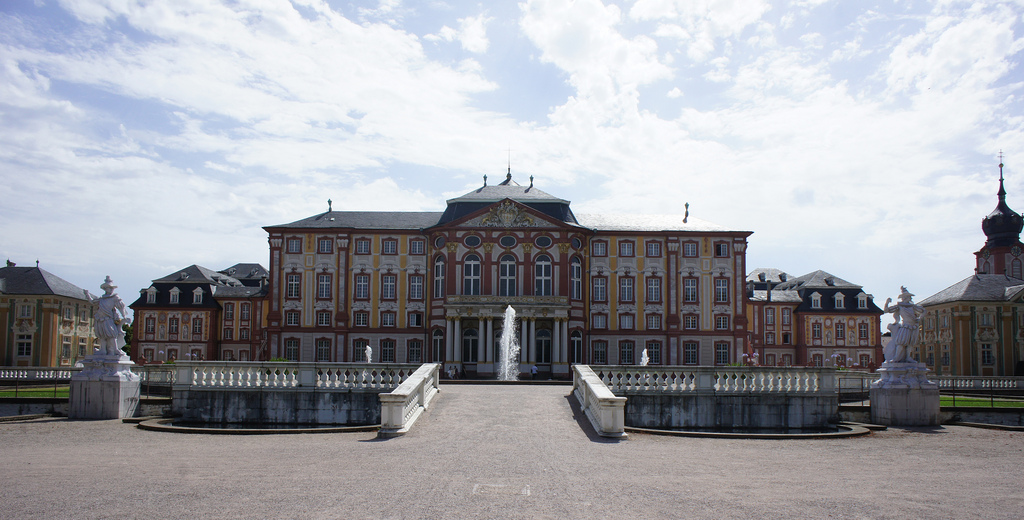
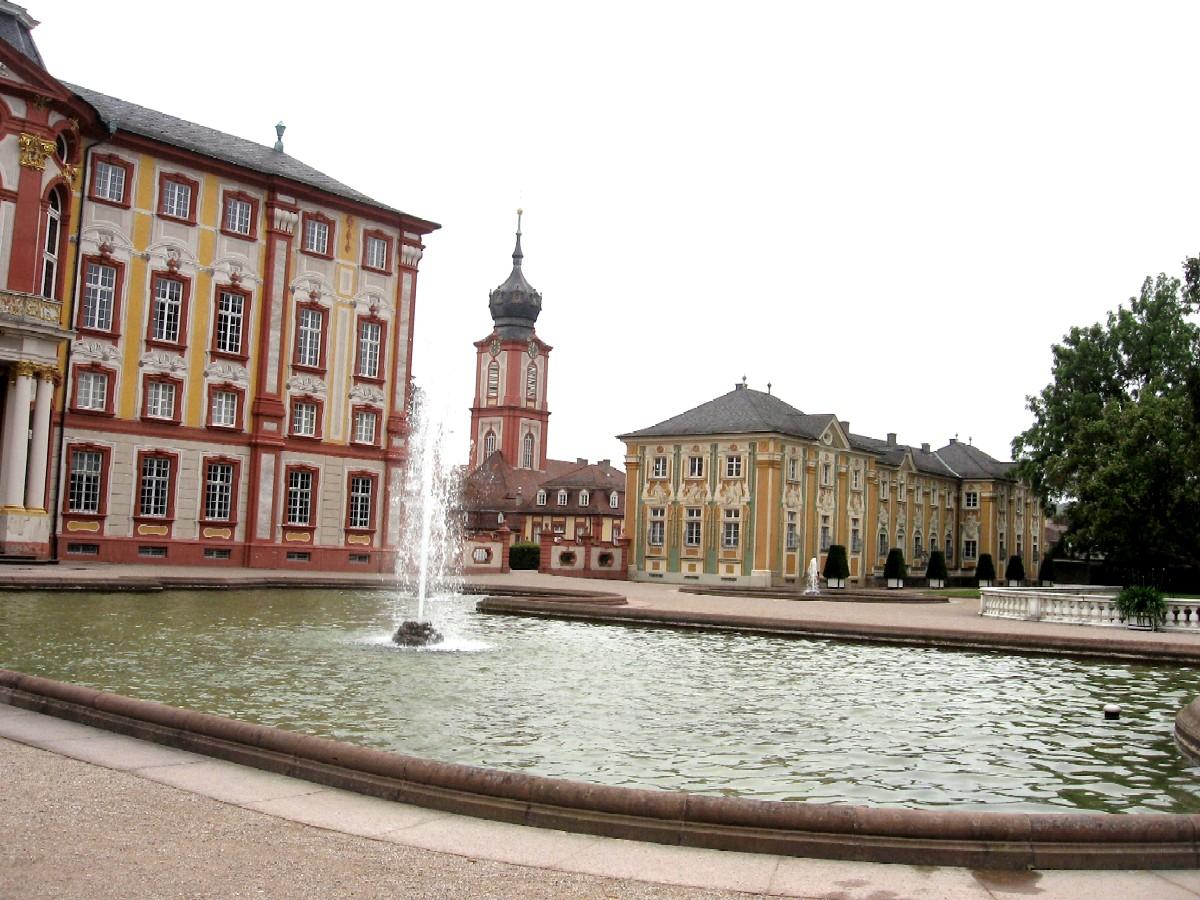
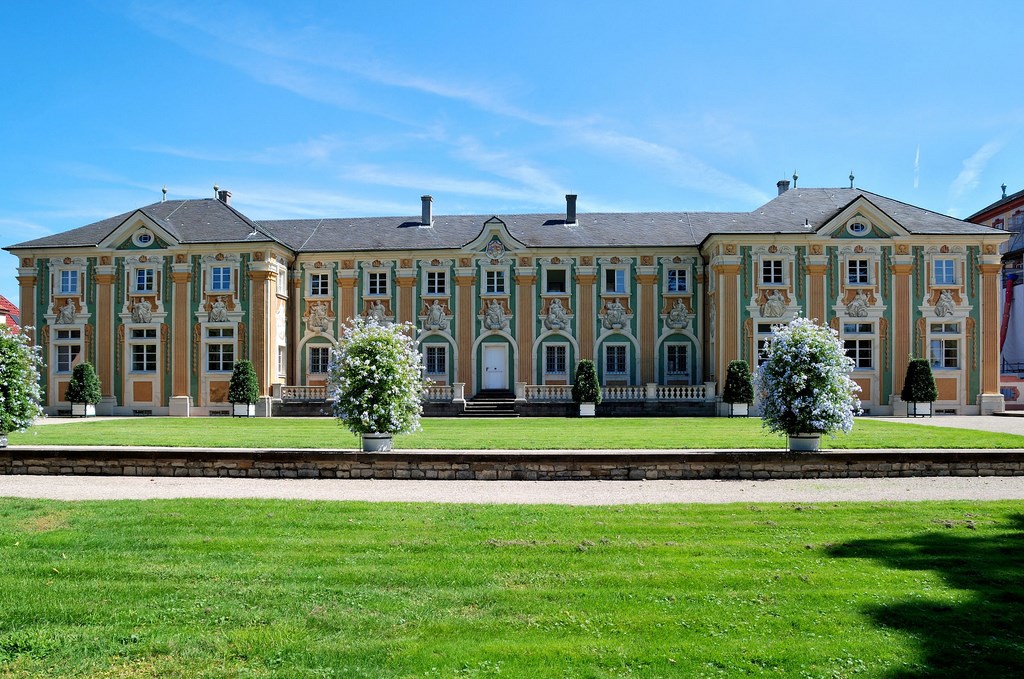
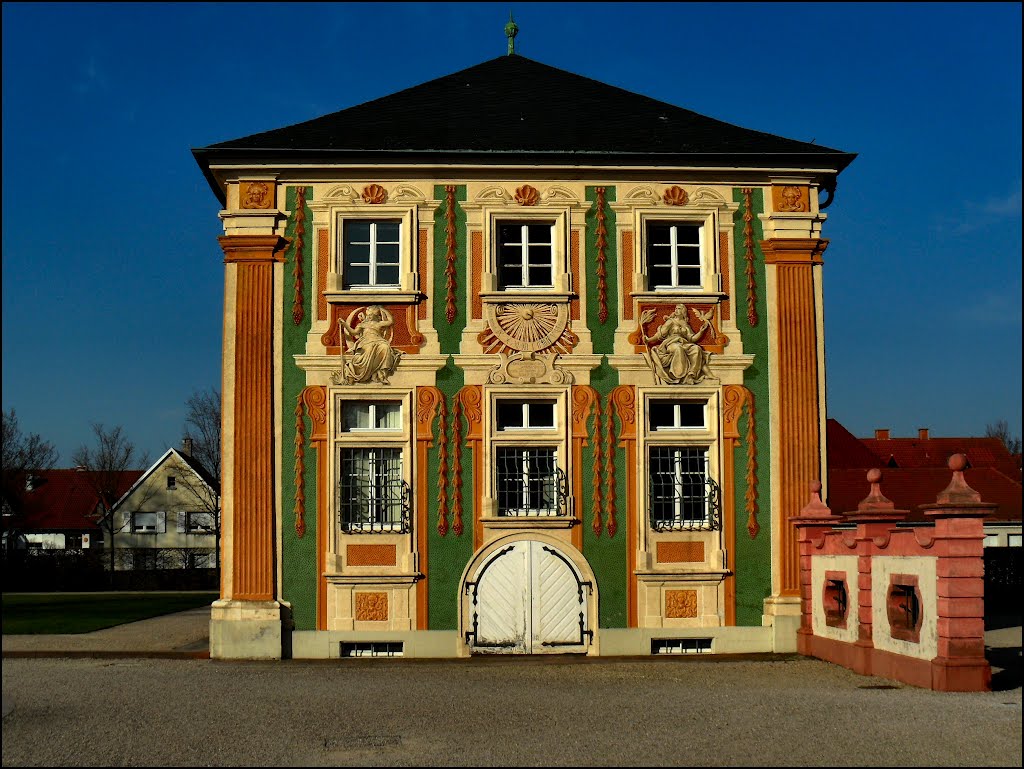
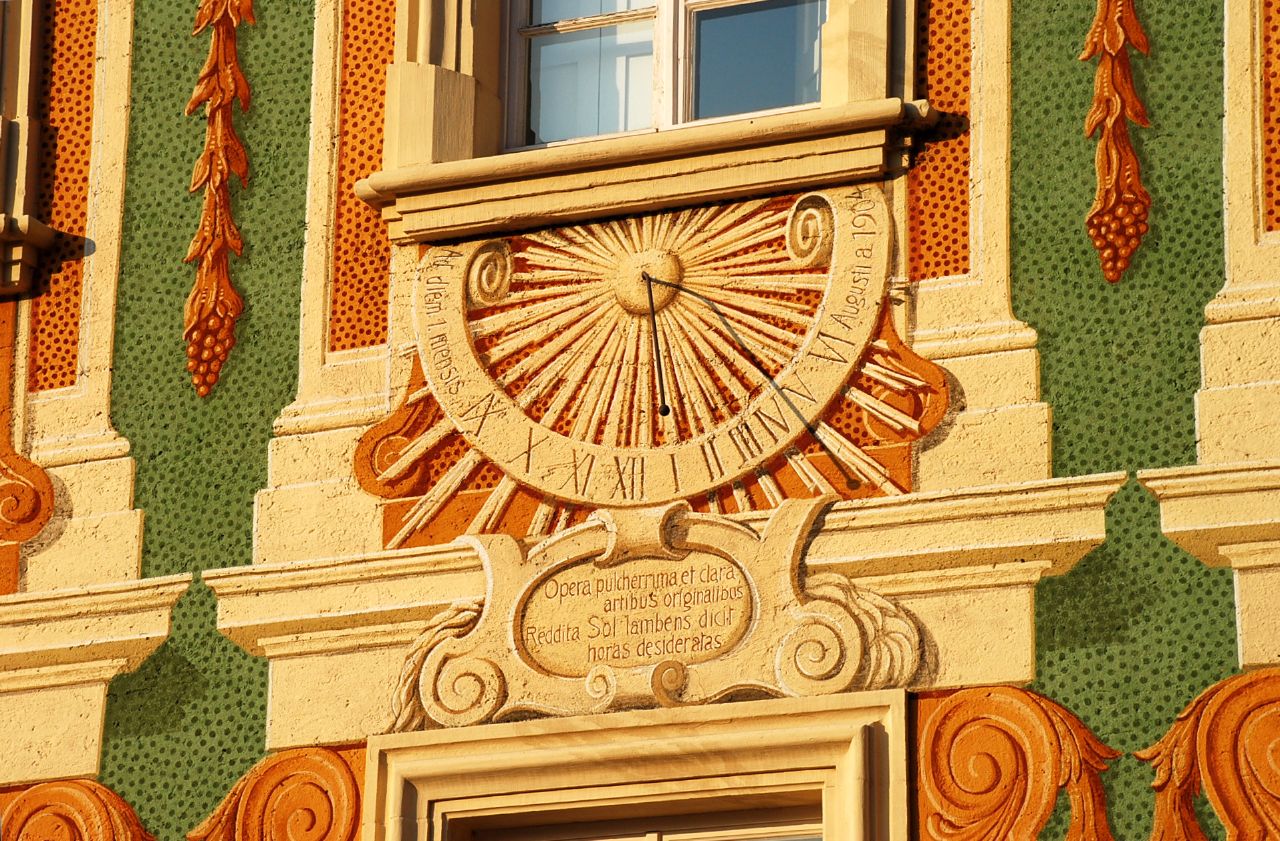
The Château of Bruchsal was built in the baroque style of the mid 18th century, starting around 1720, and served as the official residence of the bishops of Speyer. Its centre was a three-winged building that was based on the plans of Maximilian von Welsch for Cardinal Damian Hugo Philipp von Schönborn, Prince-Bishop of Speyer (1719–1743) and of Konstanz (1740). After the plans had been modified several times, the central staircase was built by Balthasar Neumann, who had taken over and filled the role of Chief Engineer since 1731. It is generally regarded as one of the most successful design solutions for a baroque staircase. The château complex includes numerous other buildings, among them Damian's Gate and the Church of the Court. In the closing days of World War II the château was badly damaged by an air raid aimed at Bruchsal, and it burned out completely. The famous staircase largely survived (though it was badly damaged), but the dome did not. After lengthy discussions about whether and how it should be done, the large central part of the building (Corps de Logis) was reconstructed (well into the 1970s) as a museum, while the Church wing design was changed to a modern design.
http://en.wikipedia.org/wiki/Bruchsal
http://de.wikipedia.org/wiki/Schloss_Bruchsal
https://www.flickr.com/photos/75487768@N04/sets/72157635138296003
https://www.flickr.com/photos/infactoweb/sets/72157623019790469
http://www.belle-alliance.com/bruchsal/wiederaufbau/wiederaufbau.html
http://members.virtualtourist.com/m/pb/1192d/
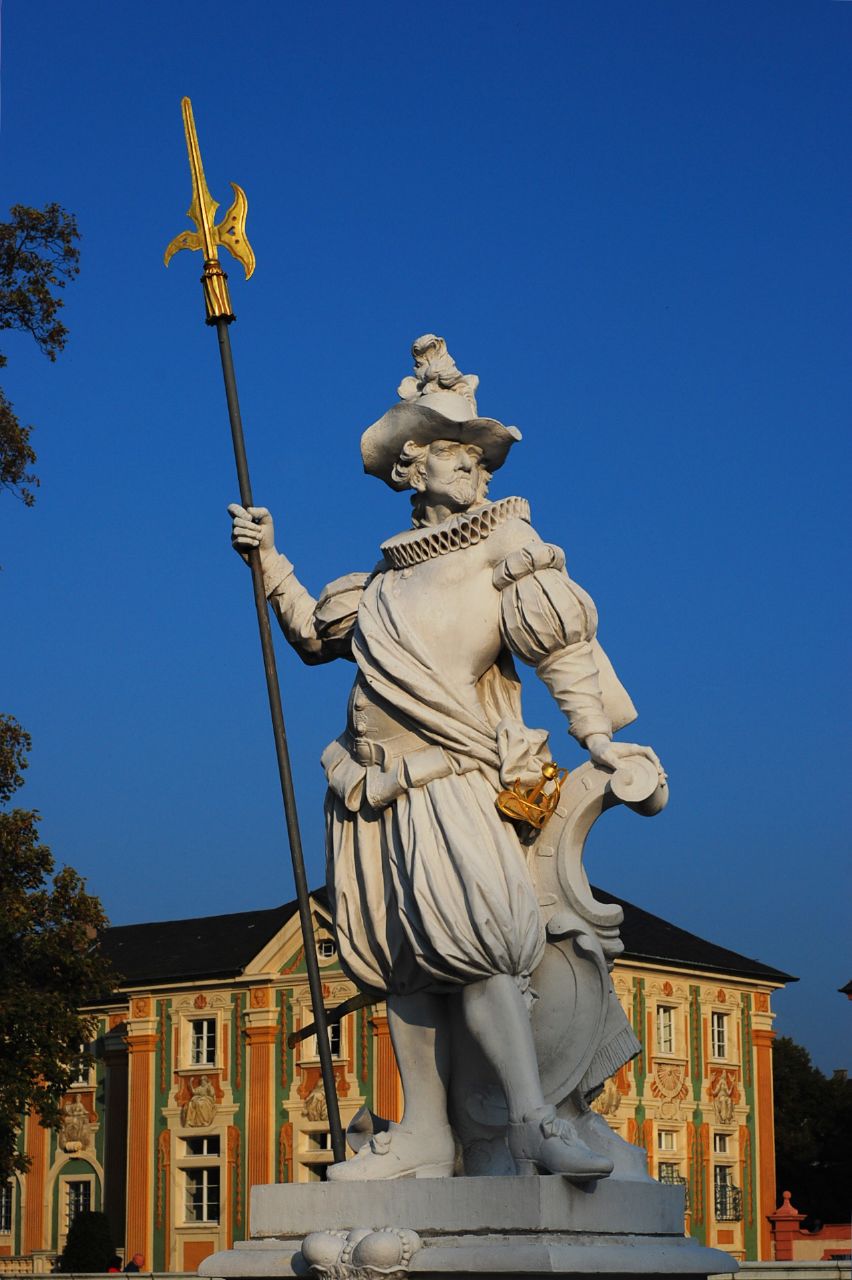
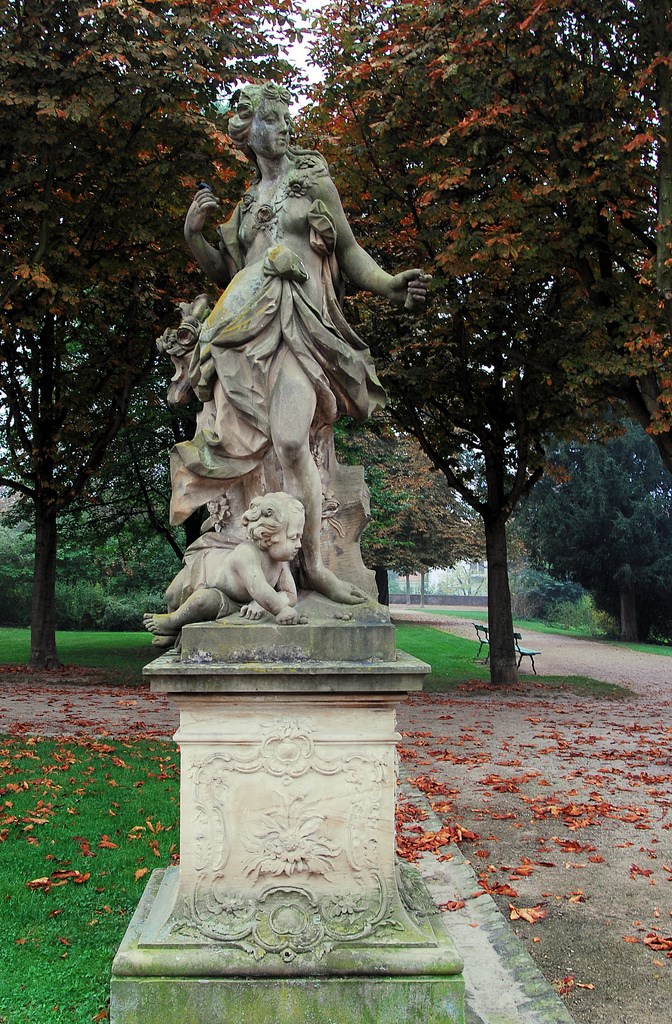
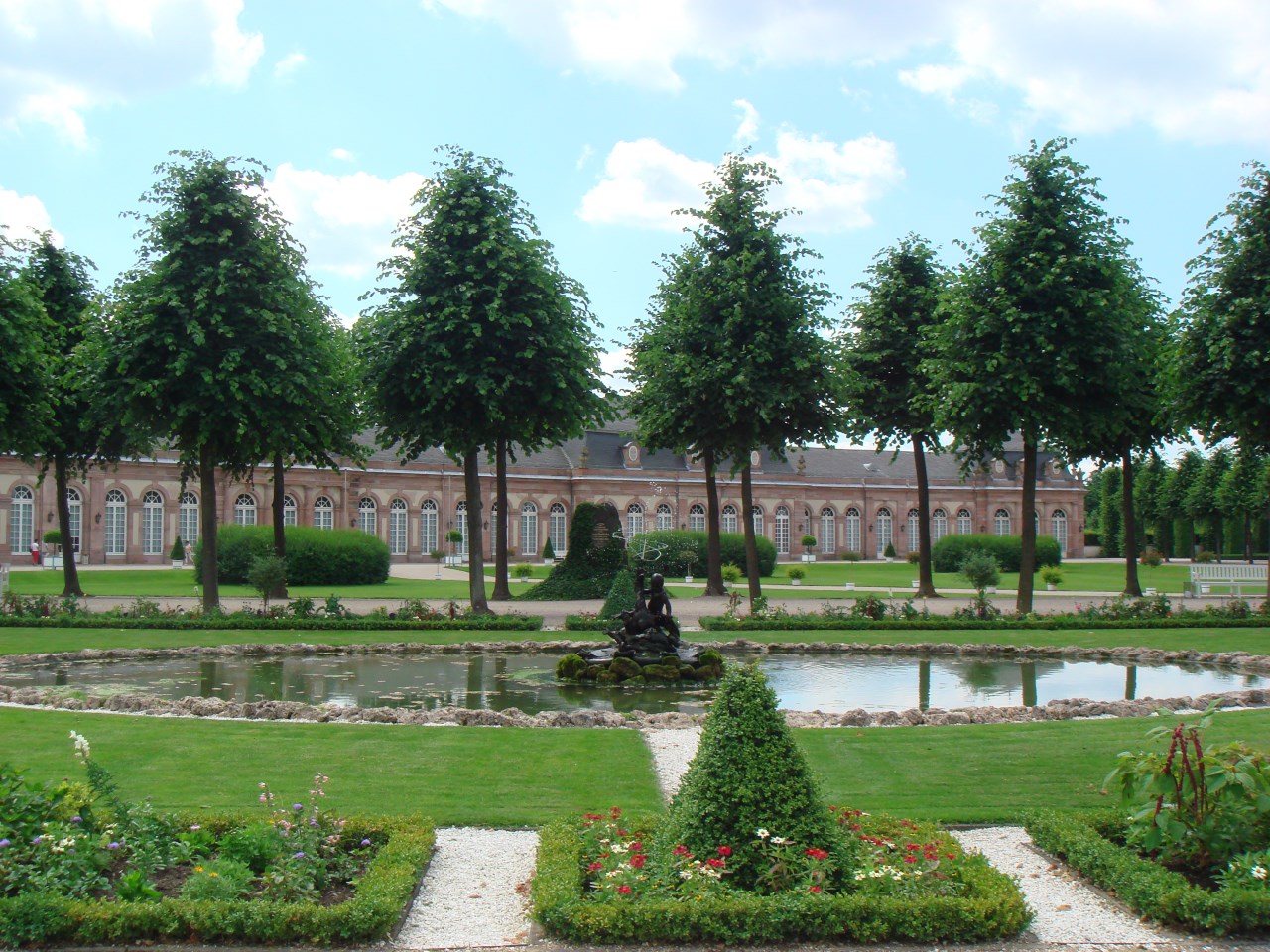
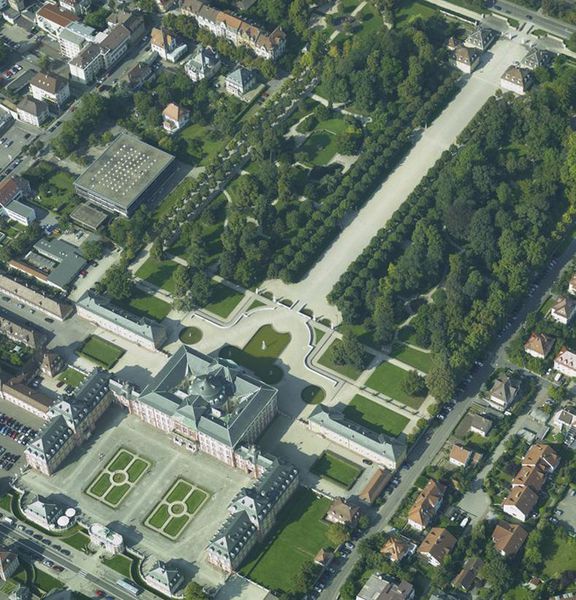
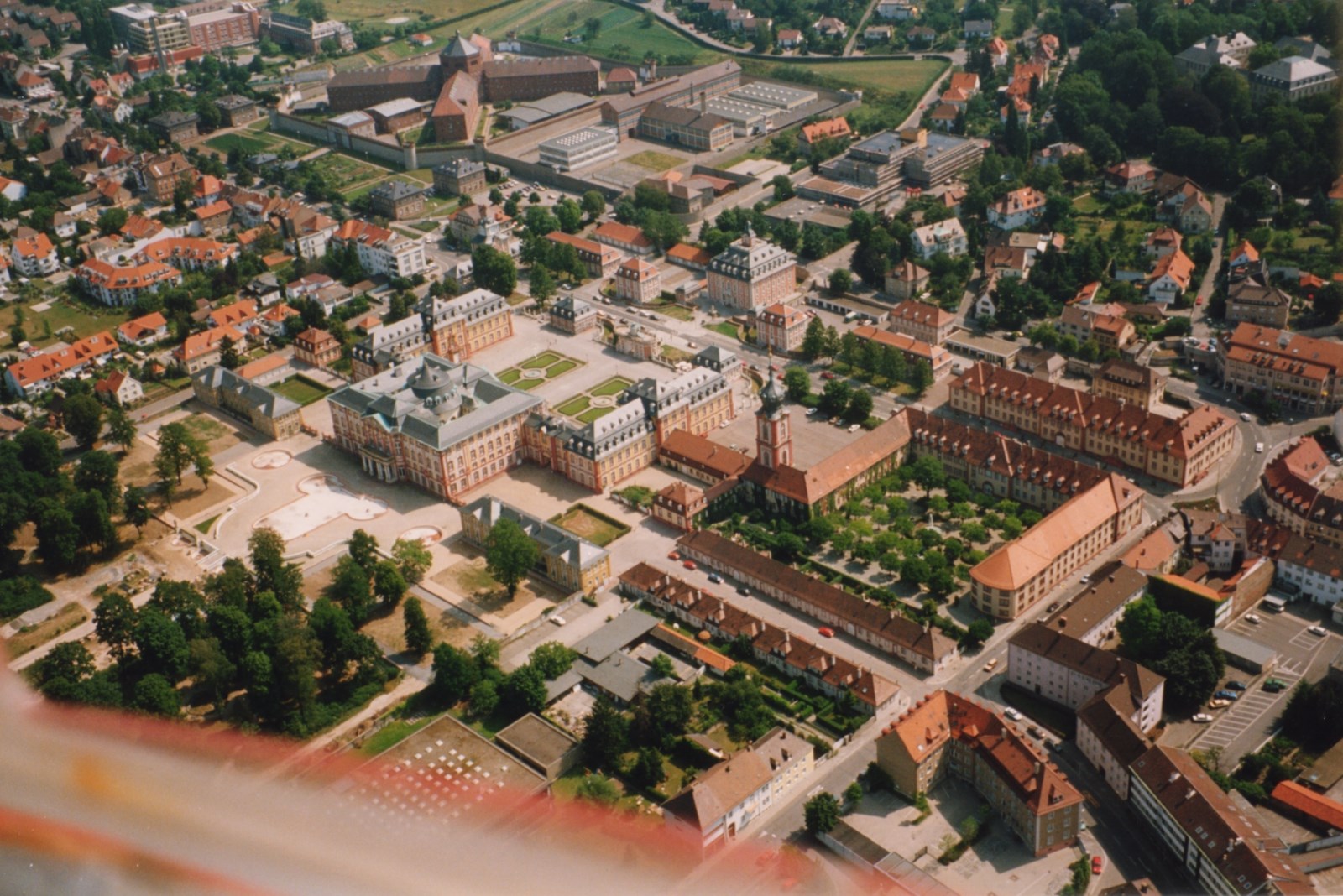
Vídeo:
Web recomendada: http://www.schloss-bruchsal.de/
Contador: 7912
Inserción: 2015-04-08 17:54:02
Lugares a visitar en un radio de 100 km (en línea recta)
Mapa de los lugares a 100 km (en línea recta)
Mostrando Registros desde el 1 hasta el 0 de un total de 0
Visitas |
Más visitados Basílica de San Marcos 154978 Catedral de Notre Dame (París) 144286 Torre de Pisa 131630 Monte Saint-Michel 100727 Presa de las Tres Gargantas 81584 |
Incorporaciones |
Comentarios hazola Cúpula de la Roca gracias me... gera Buenos Aires las mejores fotos de la mejor ciudad del... Daniel M. - BRASIL San Francisco ... PEQUE Presa Chicoasén SERA QUE ALGUIEN ME PUEDE DAR MAS INFORMACIÓN DE ESTE PROYECTO ESTUDIO EN LA UNACH Y ES PARA UN... Mery Huaca Pucllana Muy interesante, muy buena la información y... |
 Tweet
Tweet


